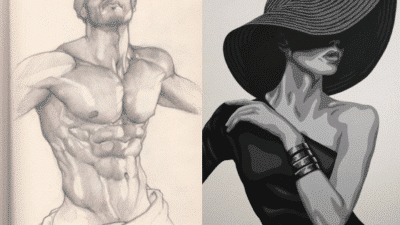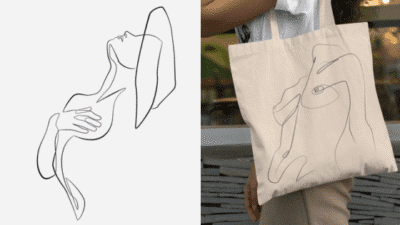
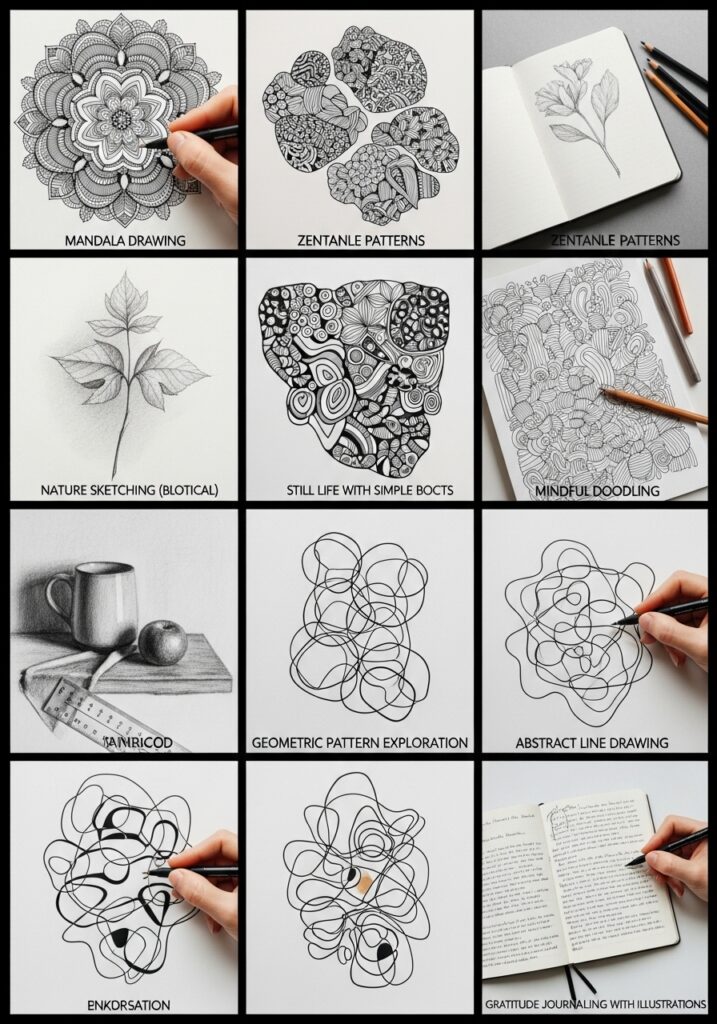
In today’s fast-paced world, the demands of professional life often leave individuals seeking effective avenues for de-stressing and mental rejuvenation. While meditation and exercise are well-established methods, the therapeutic power of drawing often goes underestimated, particularly for those seeking a more engaging and creatively fulfilling approach to mindfulness. Engaging in professional drawing, even as a serious hobbyist, offers a unique blend of focused concentration, sensory engagement, and creative expression that can significantly reduce stress and enhance mental clarity. This is not merely about idle doodling; it’s about channeling artistic skill and intention into a practice that promotes deep relaxation and mindful presence.
Drawing compels you to slow down, observe, and engage with the present moment. It shifts your focus from external pressures to the intricate details unfolding on your canvas or paper. This immersive experience can quiet a restless mind, lower cortisol levels, and foster a sense of accomplishment. Moreover, the structured yet flexible nature of professional drawing allows for both rigorous application and intuitive exploration, catering to various states of mind. By embracing these professional drawing ideas, you can cultivate a profound connection with your inner self, transforming stress into a powerful source of creative energy and personal growth.
1. Mandala and Zentangle Artistry
Mandala and Zentangle art stand out as highly effective tools for mindful de-stressing due to their structured, repetitive, and meditative qualities. A mandala, meaning “circle” in Sanskrit, is a geometric configuration of symbols, often used in spiritual traditions to represent the cosmos or deities in various cultures. Zentangles, on the other hand, are miniature abstract works of art created by drawing structured patterns, or “tangles,” in an easy, meditative, and enjoyable way. Both practices emphasize process over product, making them ideal for relaxation.
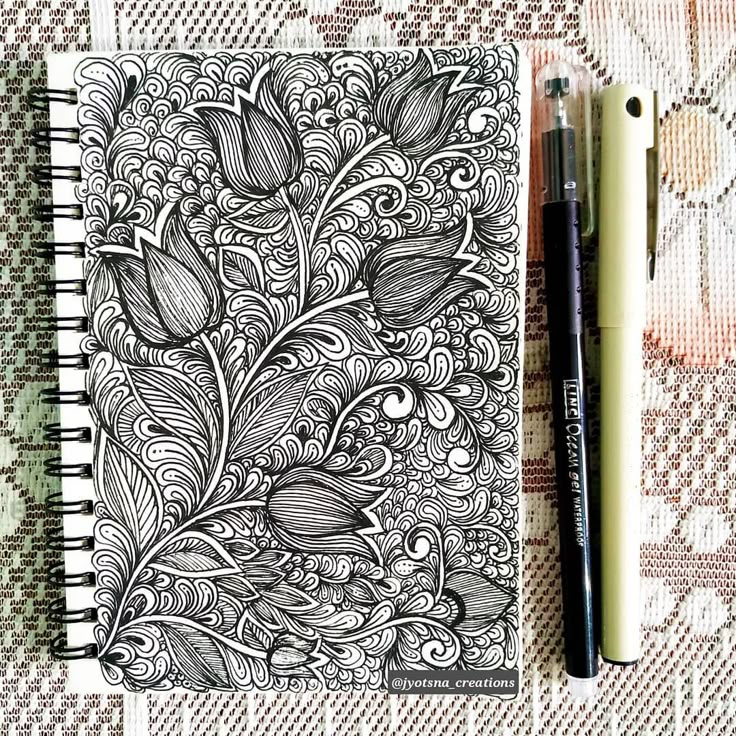

What Makes Them Relaxing and Mindful?
The repetitive strokes and patterns inherent in both mandalas and Zentangles induce a flow state, a psychological phenomenon where one becomes fully immersed in an activity, losing track of time and external worries. This state of intense focus acts as a powerful antidote to anxiety and overthinking. The absence of a “right” or “wrong” way to create these patterns reduces performance pressure, allowing for pure, unadulterated creative expression. Each line drawn becomes a small act of presence, grounding the artist in the moment.
Professional Approach

For a professional approach, consider experimenting with various drawing tools. Fine-point pens (0.05mm to 0.8mm) offer precision, while charcoal pencils can create softer, more organic effects for larger mandalas. Explore advanced tessellations, symmetry, and intricate shading techniques to elevate your work. Use high-quality paper that can withstand multiple layers or ink applications. Rather than simply copying designs, learn to deconstruct existing patterns and then create your own unique “tangles” or mandala segments. This analytical yet creative process engages both the logical and intuitive parts of the brain. Start with a central point or a simple square grid, then build out your patterns methodically, focusing on consistency and detail. The beauty lies in the intricate interplay of lines and forms, where each addition contributes to a harmonious whole.
Examples and Variations
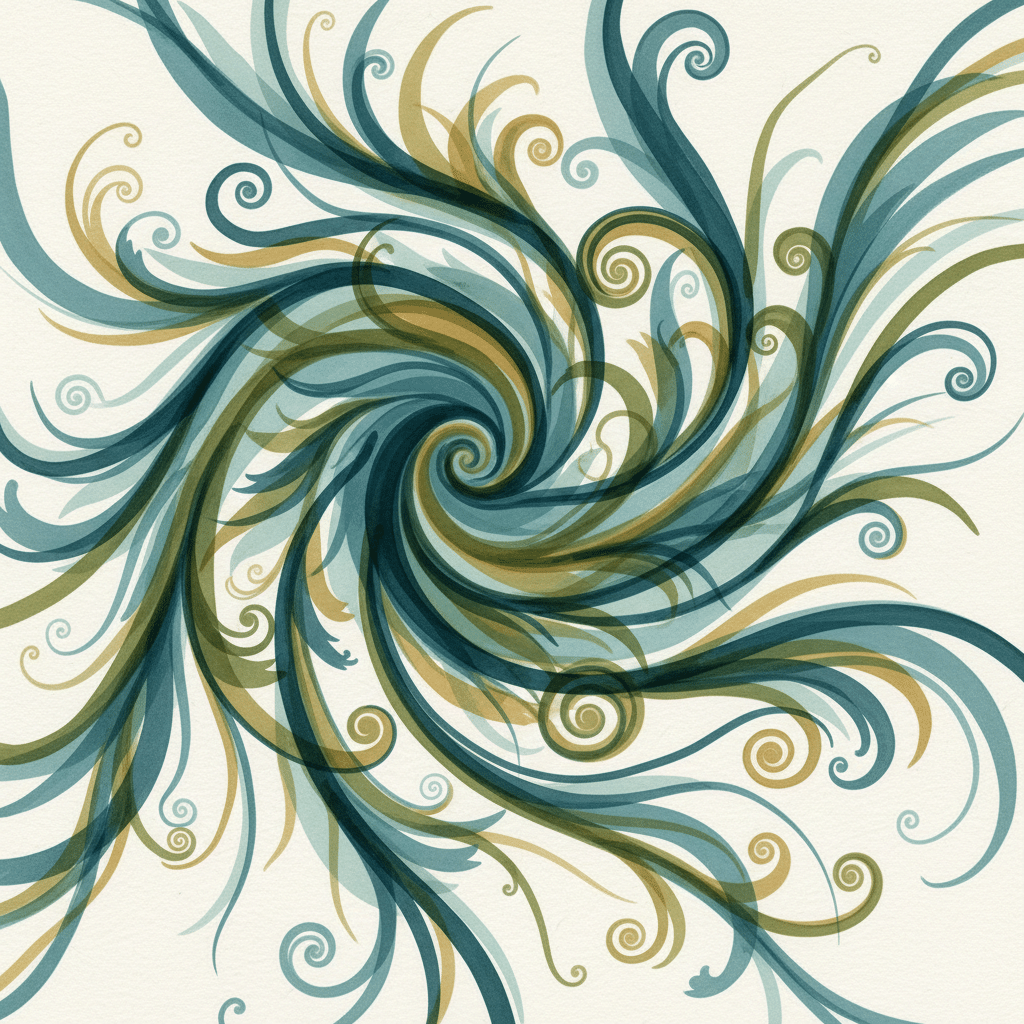
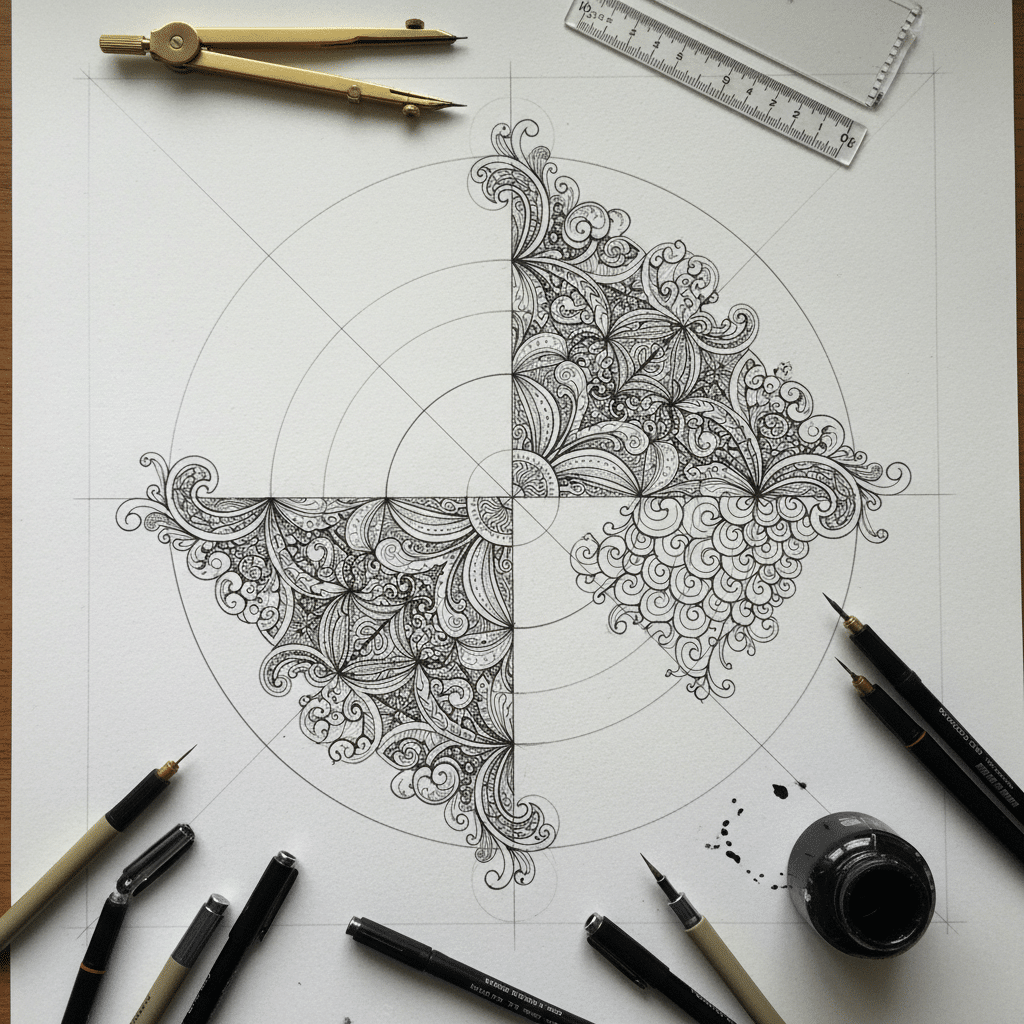
- Geometric Precision: Focus on strict symmetry and geometric patterns, using rulers and compasses for initial structural integrity, then freehand intricate fill patterns.
- Organic Flow: Allow patterns to evolve more naturally, using curves and free-flowing lines, perhaps inspired by natural forms like leaves or waves.
- Color Gradations: Introduce subtle color variations using colored pencils or gel pens within your patterns to add another layer of visual complexity and meditative focus.
- Mixed Media: Combine ink with light washes of watercolor or pastel accents to add depth and texture, enhancing the overall contemplative experience.
2. Botanical Illustration for Tranquil Observation
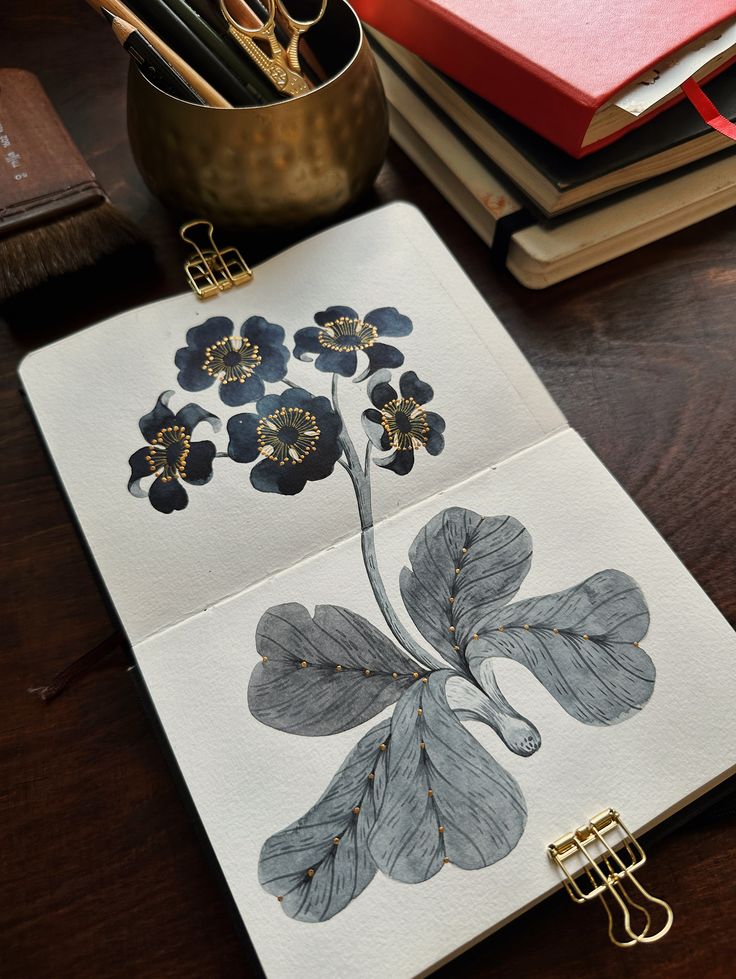
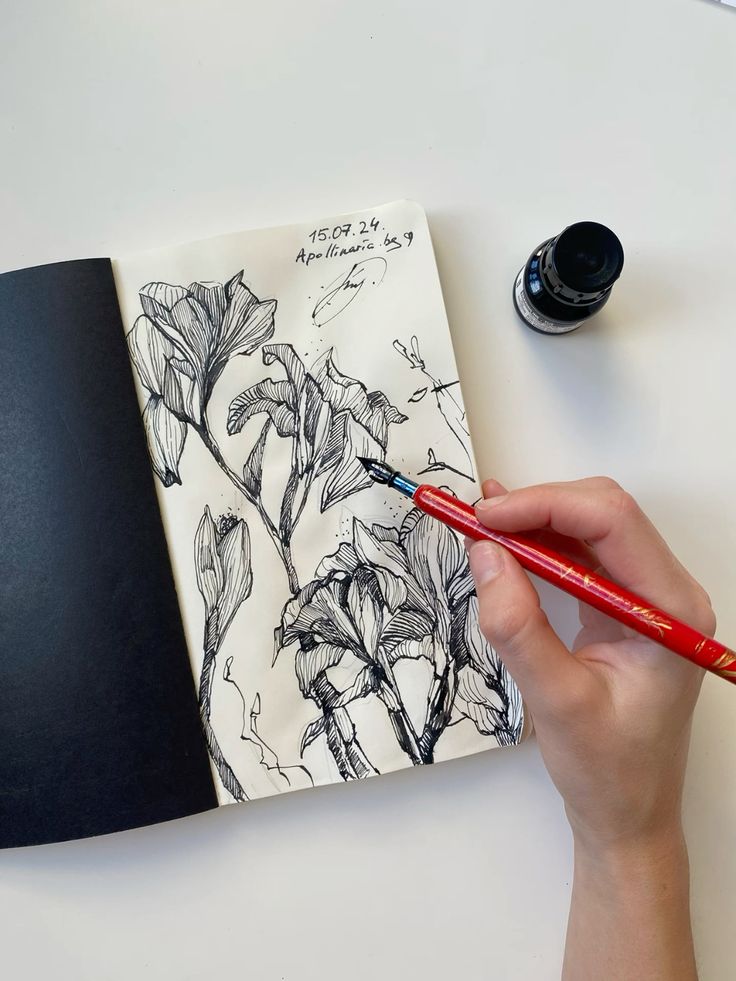
Botanical illustration offers a profound pathway to relaxation through its emphasis on meticulous observation and the serene beauty of the natural world. This practice involves depicting plants with scientific accuracy and artistic grace, often focusing on minute details that reveal the plant’s unique characteristics. It demands patience, precision, and an eye for form, texture, and light, all of which contribute to a deeply absorbing and calming experience.
Why It De-stresses and Promotes Mindfulness
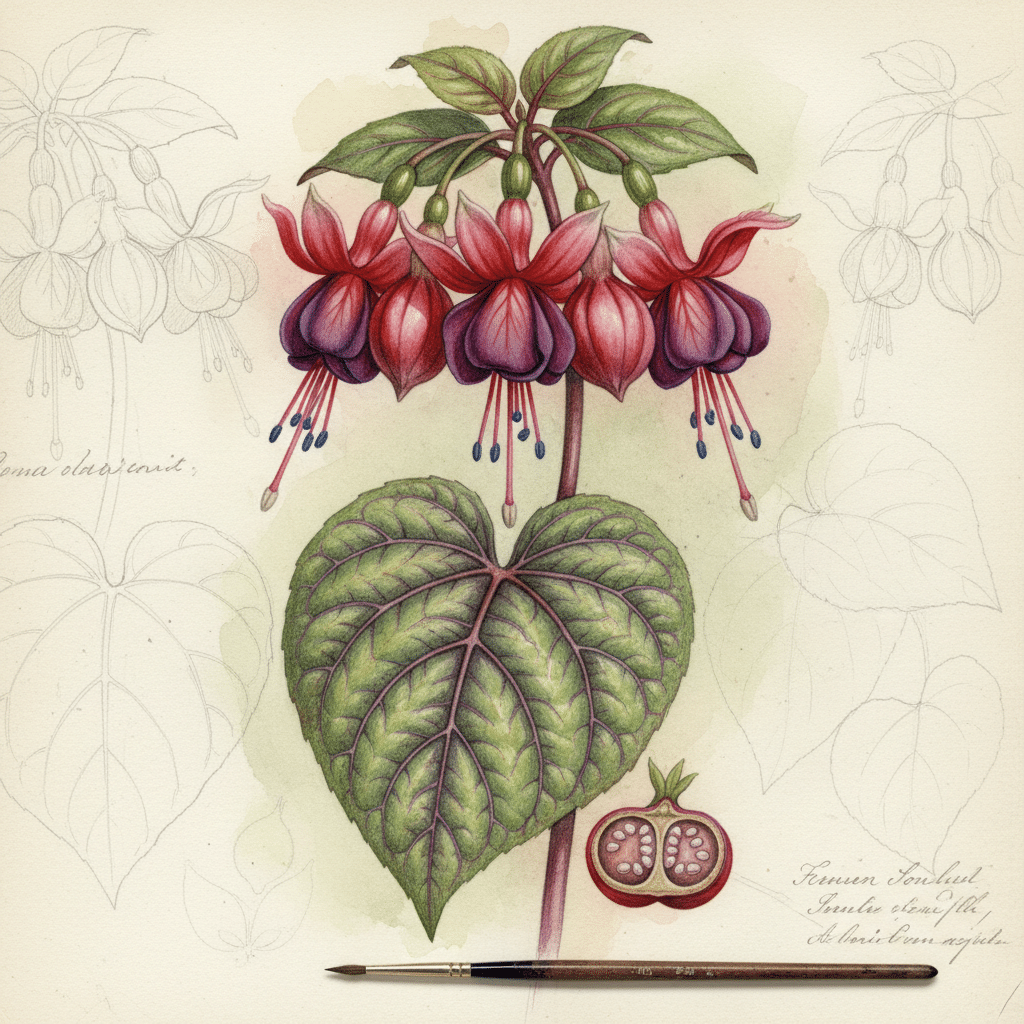
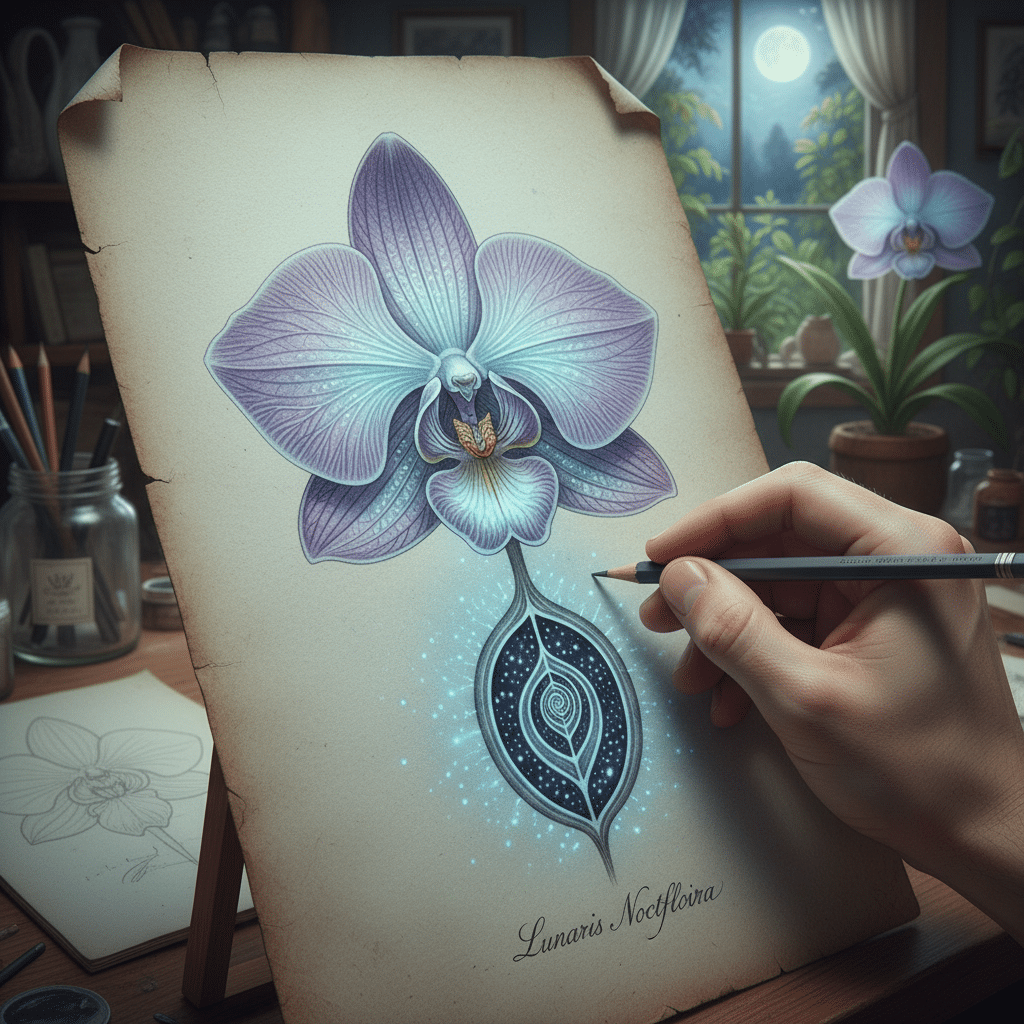
When you engage in botanical illustration, you are forced to slow down and truly see the subject. You notice the subtle curve of a petal, the delicate venation of a leaf, or the intricate structure of a seed pod. This intense focus on nature’s details pulls you away from internal anxieties and external distractions, fostering a sense of peace and wonder. The methodical process of layering graphite or color, stroke by stroke, becomes a meditative rhythm, allowing for the gentle unfolding of both the artwork and your inner calm. It connects you to the natural world in a very intimate way, promoting appreciation and reverence for life’s intricate designs.
Professional Approach
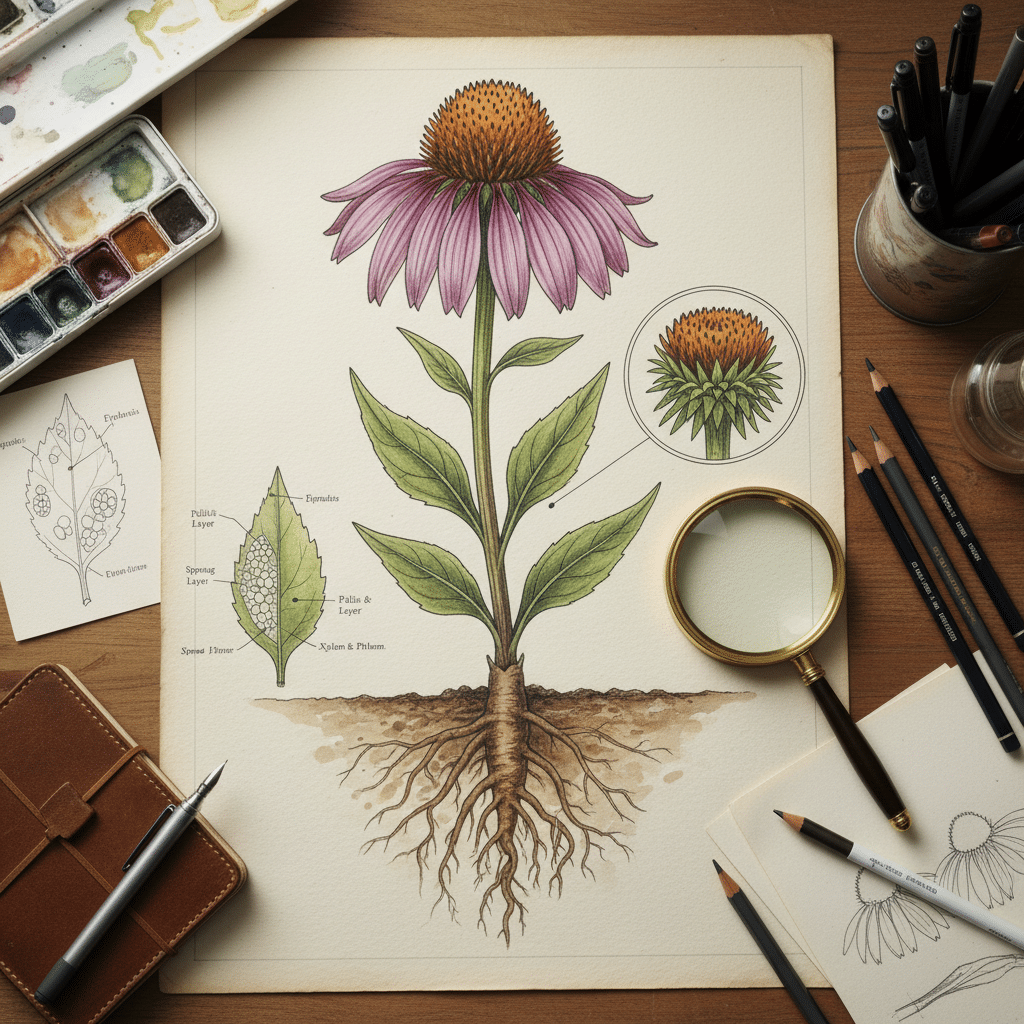
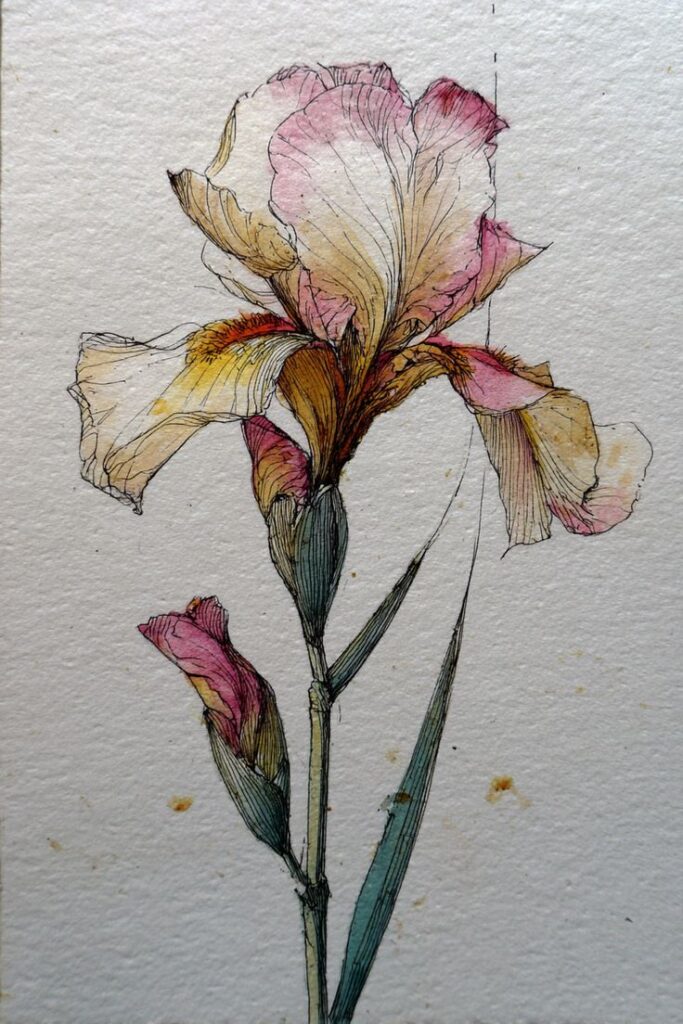
To professionally approach botanical illustration, gather high-quality reference materials, preferably live specimens. Invest in fine-grade graphite pencils (2H to 6B), watercolor pencils, or professional-grade colored pencils. Master observational drawing techniques, paying close attention to proportion, perspective, and the interplay of light and shadow. Learn about plant anatomy to accurately represent your subject. Consider using a magnifying glass to capture microscopic details. Develop your shading skills to create realistic three-dimensionality and texture. For an in-depth exploration of this meticulous art form, consider pen and ink botanical drawing techniques, which demand exceptional precision and patience, further enhancing the meditative aspect.
Examples and Variations
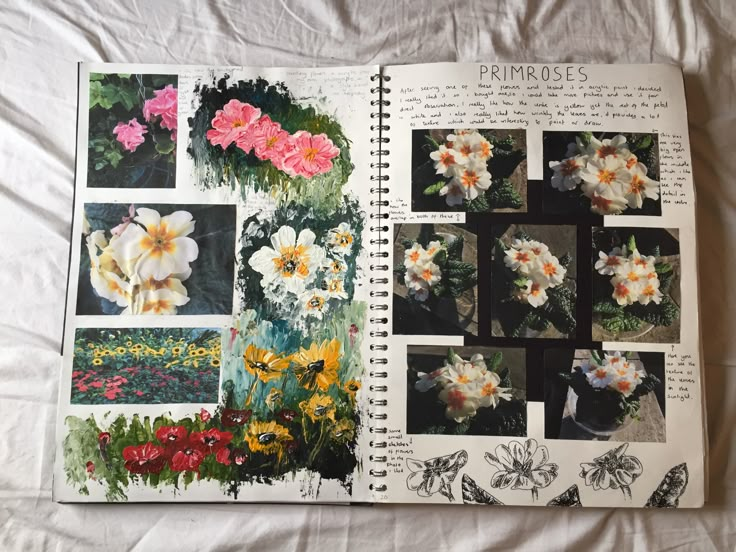
- Detailed Studies: Select a single flower or leaf and create a highly detailed study, focusing on every vein, pore, and imperfection.
- Compositional Arrangements: Arrange a small bouquet or cluster of botanicals, paying attention to how light interacts with the different elements.
- Monochromatic Focus: Work solely in graphite or sepia tones, emphasizing form and texture through shading and line work.
- Illustrative Storytelling: Incorporate small insects or dewdrops to add a narrative element, enhancing the connection to the plant’s ecosystem.
3. Landscape and Nature Sketching
Stepping into nature with a sketchbook is an age-old practice for artists seeking inspiration and tranquility. Landscape and nature sketching involve capturing the essence of outdoor scenes, whether it’s a sprawling mountain range, a serene forest path, or a tranquil riverbank. This practice is inherently relaxing as it connects you directly with the environment, encouraging an appreciation for vastness and natural beauty.


How It Fosters Relaxation and Mindfulness
Drawing landscapes forces you to observe the interplay of light, atmosphere, and form in a dynamic setting. The act of selecting a scene, composing it on paper, and translating its elements into lines and tones creates a profound connection to your surroundings. It encourages patience as you wait for the perfect light or contemplate the complex structures of trees and rocks. This outdoor activity provides a refreshing break from indoor routines, stimulating your senses and promoting a feeling of expansiveness and calm. The transient nature of light and weather also teaches acceptance and adaptability, core tenets of mindfulness.
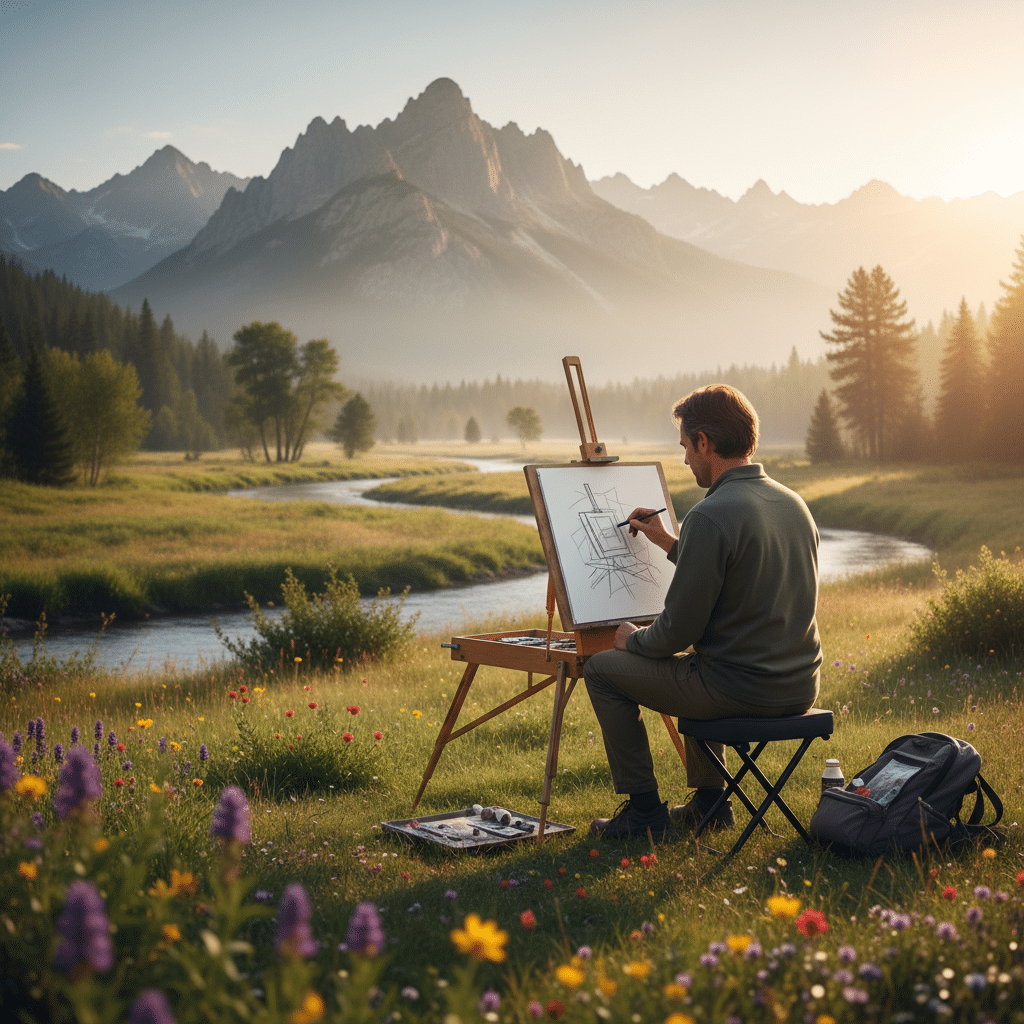
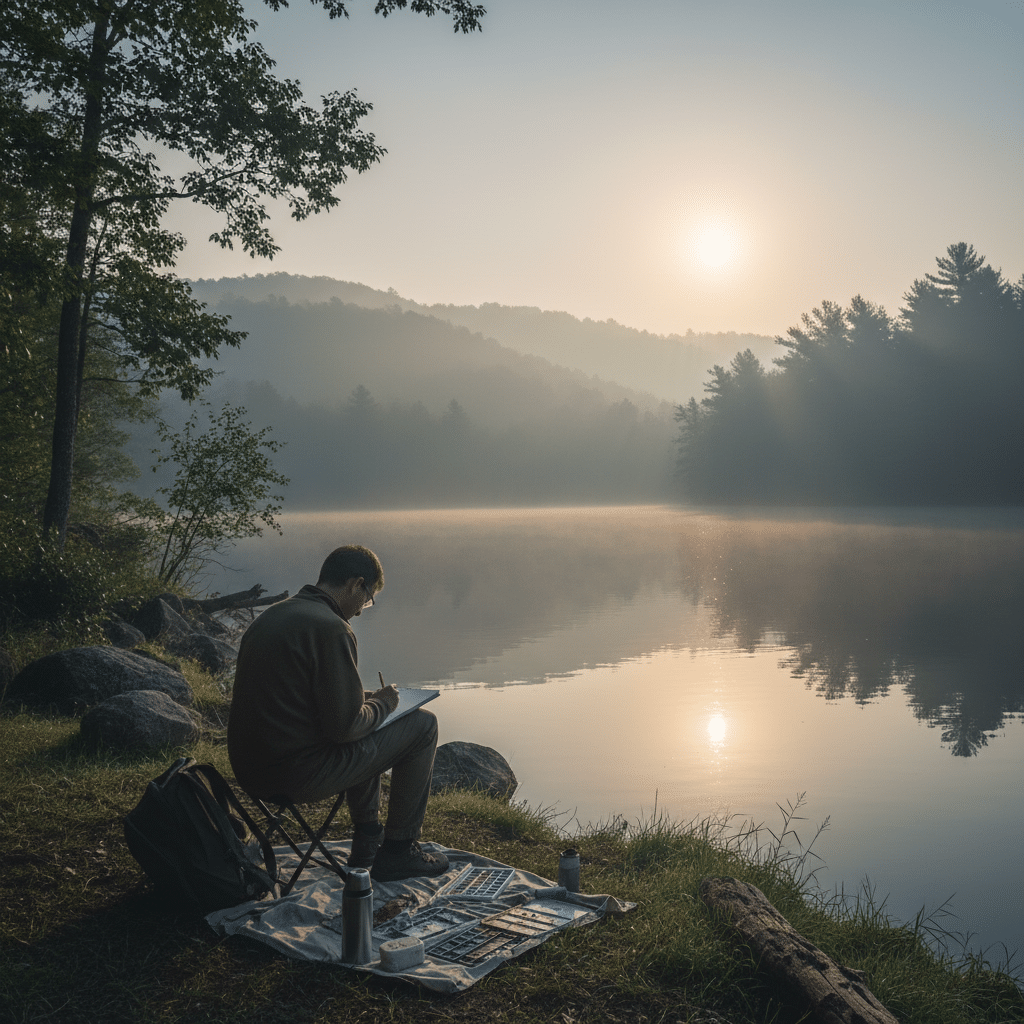
Professional Approach
For a professional approach to landscape sketching, focus on understanding atmospheric perspective – how objects appear lighter and less distinct in the distance. Learn to simplify complex scenes into fundamental shapes and values before adding details. Experiment with different mediums like charcoal, pastels, or watercolor sketches in addition to graphite, to capture varying moods and textures. Develop speed-sketching techniques to capture fleeting moments or changing light. Study the works of master landscape artists to understand composition, depth, and emotional expression. Always carry a portable kit that includes a variety of pencils, a sketchbook with good quality paper, and perhaps a small set of travel watercolors.
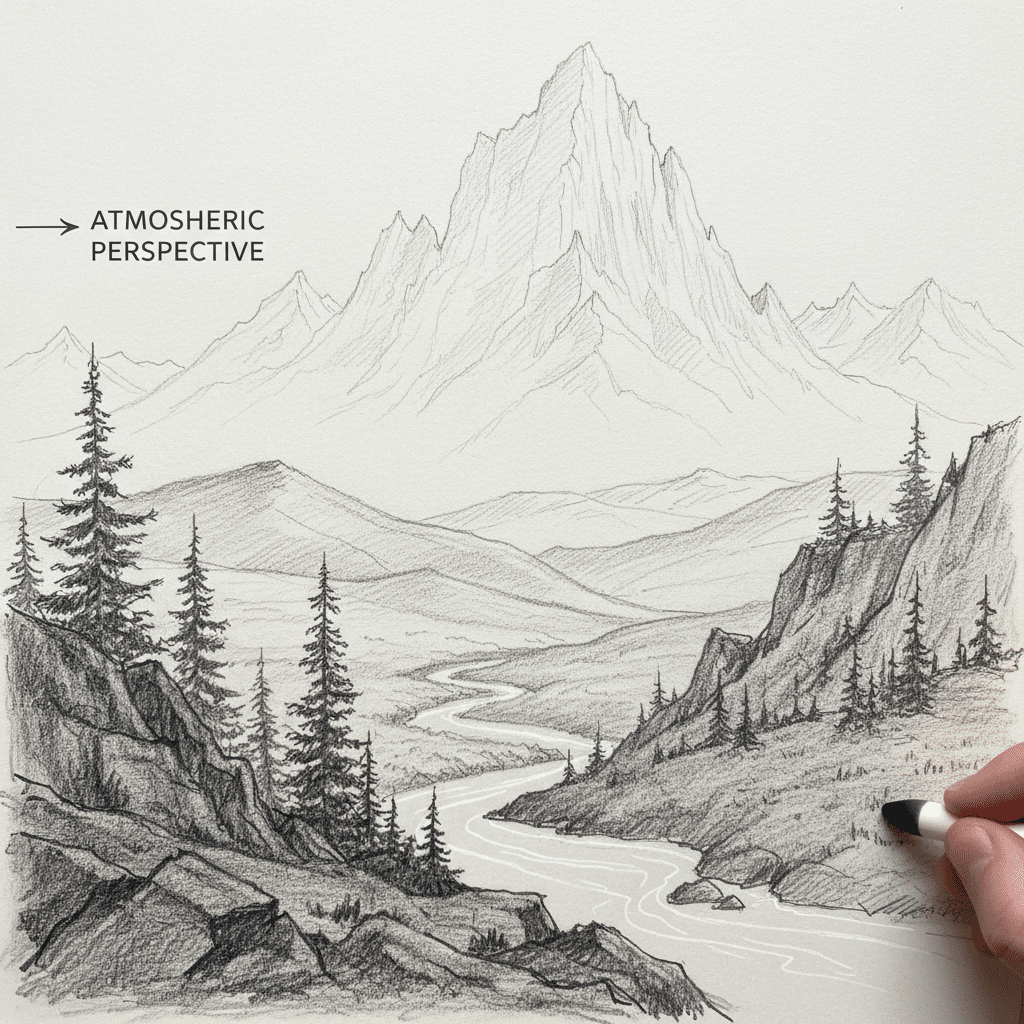
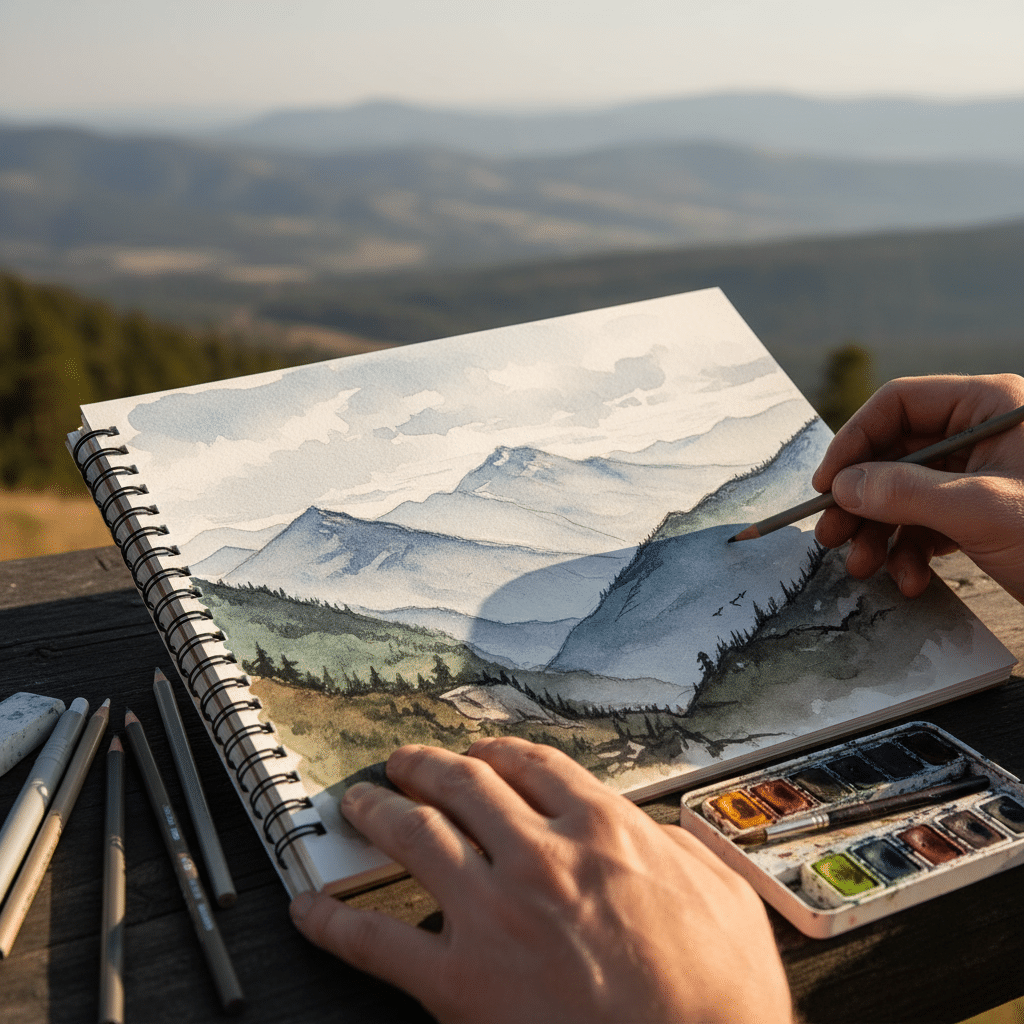
Examples and Variations
- Architectural Integration: Sketch natural scenes that include man-made structures like old barns, bridges, or lighthouses, blending natural and architectural elements.
- Seasonal Studies: Create a series of sketches depicting the same landscape across different seasons, observing changes in color, light, and foliage.
- Sky and Cloud Focus: Dedicate a sketch to capturing the drama and movement of the sky and clouds, using soft blending and expressive lines.
- Reflective Surfaces: Practice drawing water with reflections, paying close attention to distortions and shimmering effects.
4. Abstract Expressionism & Intuitive Doodling
Unlike the structured nature of mandalas or the precise observation of botanicals, abstract expressionism and intuitive doodling offer a boundless realm of creative freedom. This approach allows you to express emotions, thoughts, and sensations directly onto paper without the constraints of realistic representation. It’s a process-oriented activity where the act of creation itself, rather than the final product, is the primary source of relaxation and self-discovery.

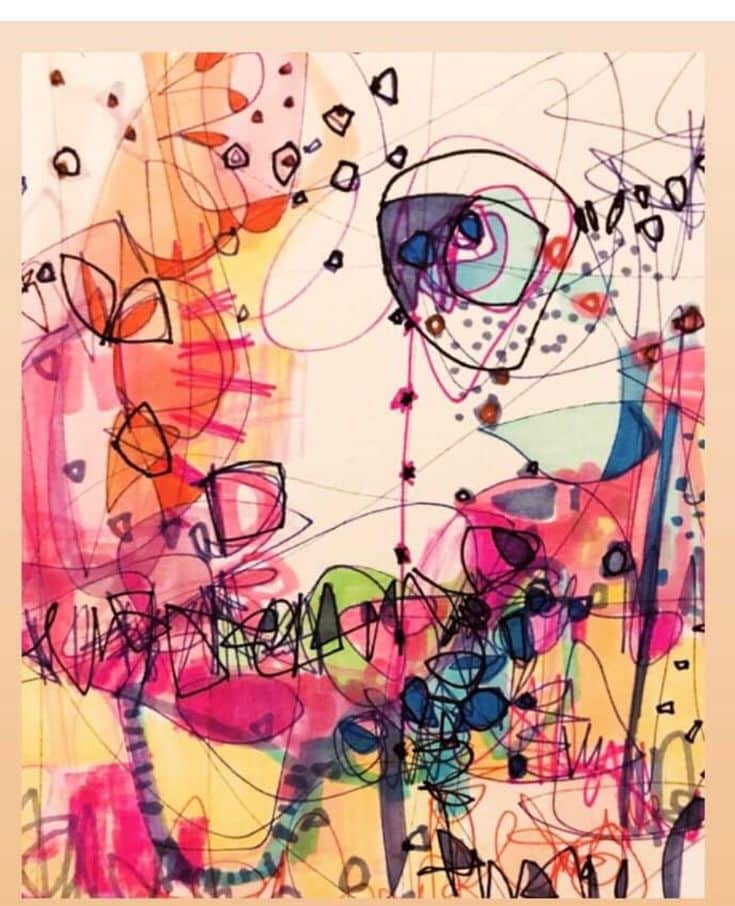
Why It’s Deeply De-stressing and Mindful
Abstract drawing liberates you from the pressure of “getting it right.” There are no rules, no reference photos, and no expectations of likeness. This freedom allows for an uninhibited exploration of line, shape, color, and texture, serving as a powerful emotional release. It encourages you to tap into your subconscious, allowing feelings to manifest visually. The act of making marks, scribbling, blending, and layering becomes a tactile form of meditation, a visual diary of your inner landscape. It fosters an understanding that creativity flows inherently and doesn’t always need a logical blueprint.
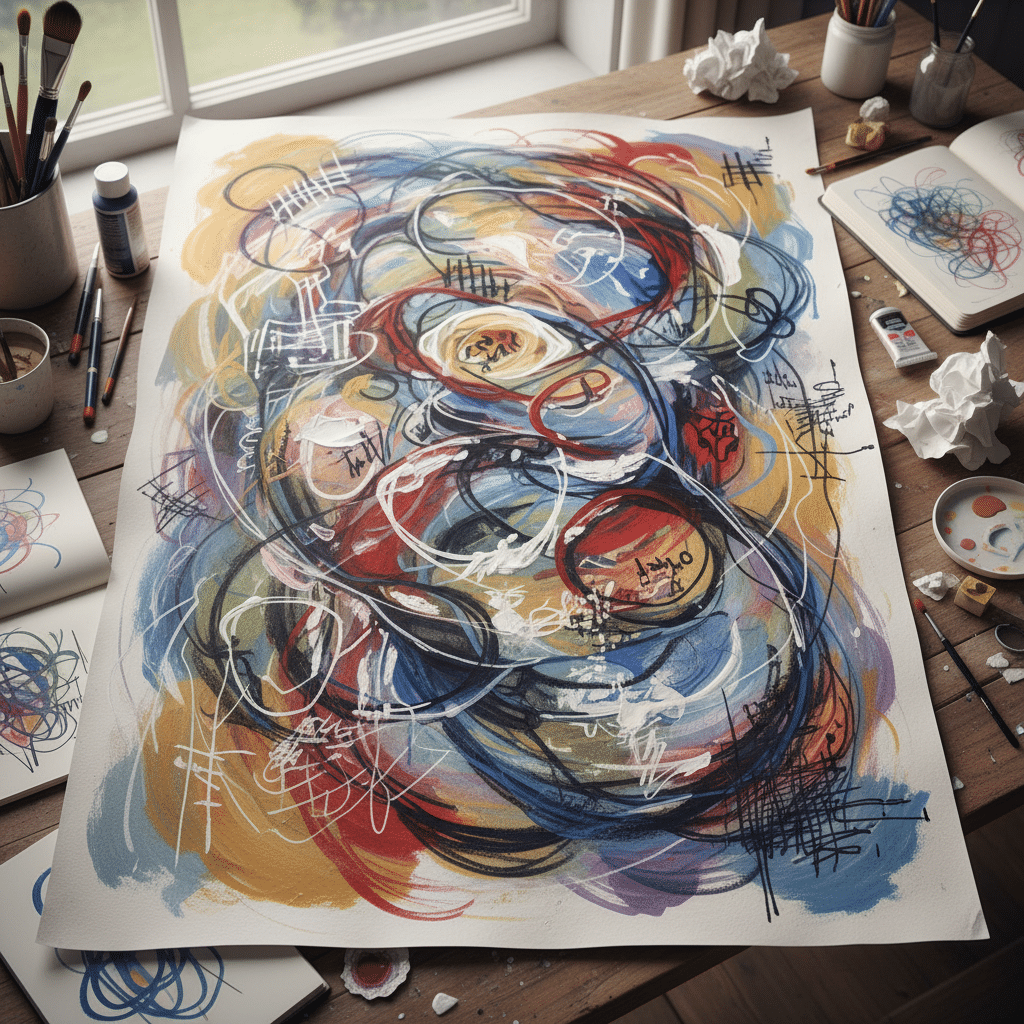

Professional Approach
While seemingly unstructured, a professional approach to abstract expressionism involves intentional experimentation with materials and techniques. Explore mediums like acrylic inks, pastels, soft graphite, or even mixed media to create varied effects. Focus on understanding color theory and how different hues evoke specific emotions. Learn about composition, even in abstraction, to create visually engaging pieces. Practice creating different types of marks – bold, delicate, sweeping, fragmented – to build a repertoire of expressive gestures. Consider working on larger formats to allow for grander, more fluid movements, utilizing your entire arm rather than just your wrist. The goal is to develop a personal vocabulary of abstract forms and textures that resonate with your inner world.
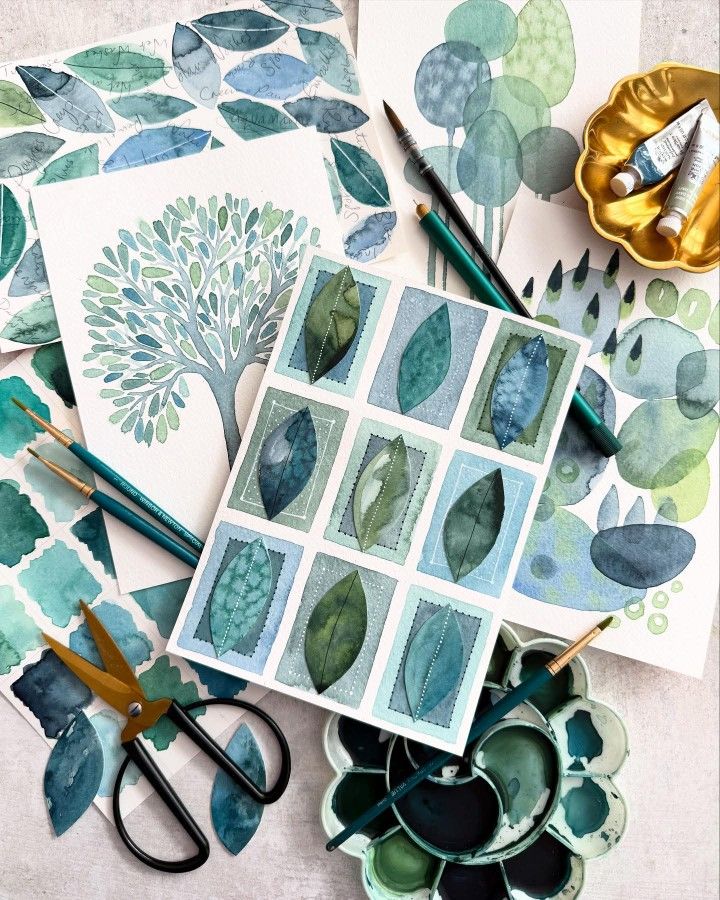
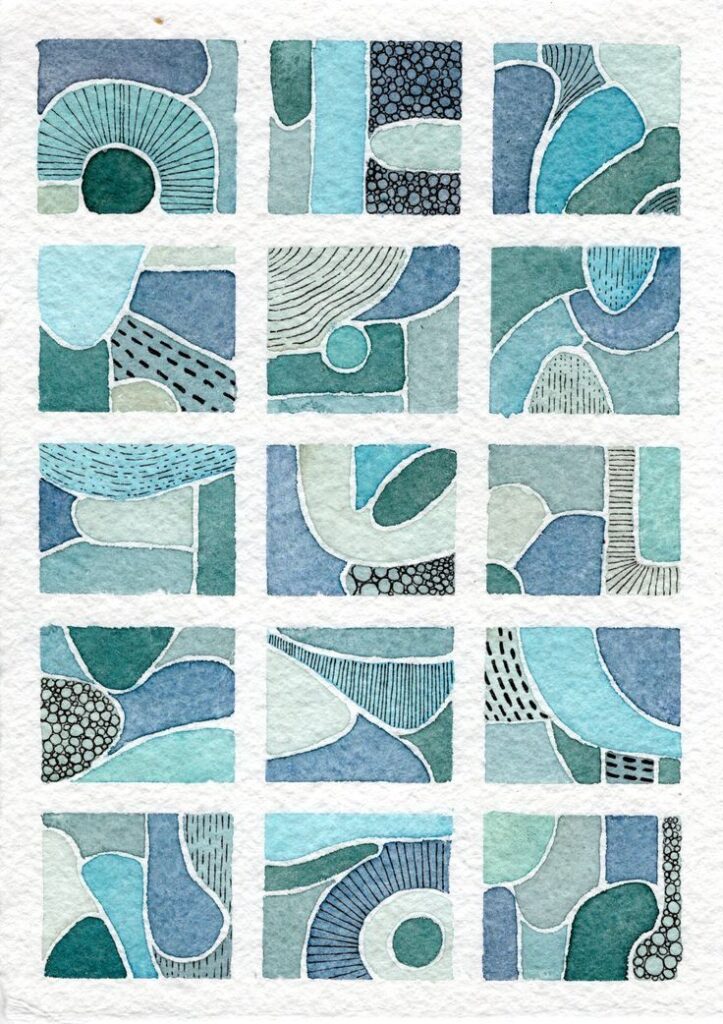
Examples and Variations
- Emotional Mapping: Choose an emotion (e.g., joy, anxiety, peace) and use colors, lines, and shapes to visually represent it.
- Music-Inspired Art: Play a piece of instrumental music and allow the rhythm, tempo, and mood to guide your hand, translating sound into visual form.
- Texture Exploration: Focus on creating a drawing purely through various textures – cross-hatching, stippling, scumbling, layering – without a discernible object.
- Color Field Studies: Use large blocks of color with minimal lines, exploring the interaction and emotional impact of different hues.
5. Still Life with Everyday Objects
Still life drawing is a classical art form that involves arranging inanimate objects and drawing them from observation. It’s a practice rooted in careful seeing and meticulous rendering, offering a structured yet deeply engaging path to relaxation. By focusing on mundane objects, you discover their inherent beauty and the complex interplay of light and shadow that gives them form.
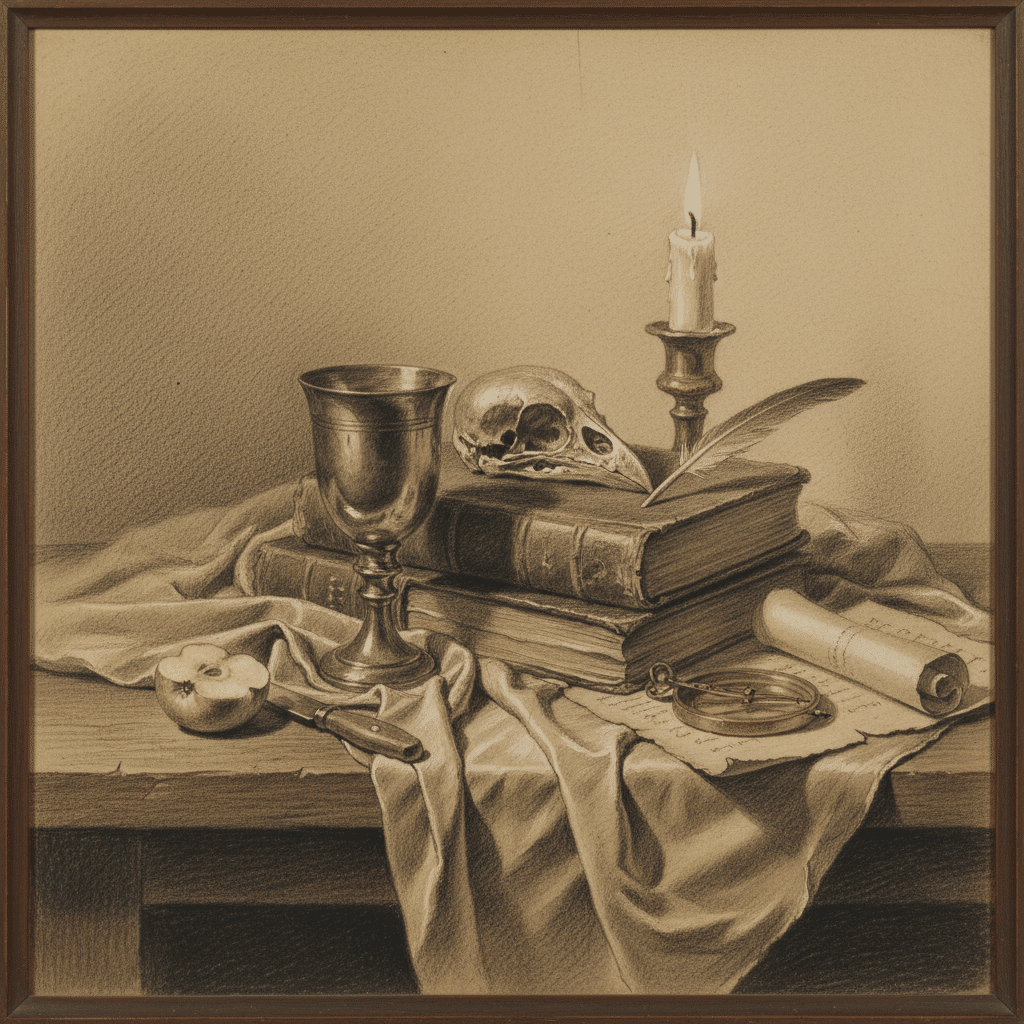

How It Promotes Relaxation and Mindfulness
The process of setting up a still life, arranging objects, and then observing them intently fosters a strong sense of present-moment awareness. You become acutely aware of shapes, volumes, textures, and the way light defines them. This focused observation quietens the “inner critic” and redirects your attention outward. The slow, deliberate act of translating three-dimensional reality onto a two-dimensional surface is inherently calming, demanding patience and precision. It’s a journey of discovery, where you find extraordinary details in the ordinary.
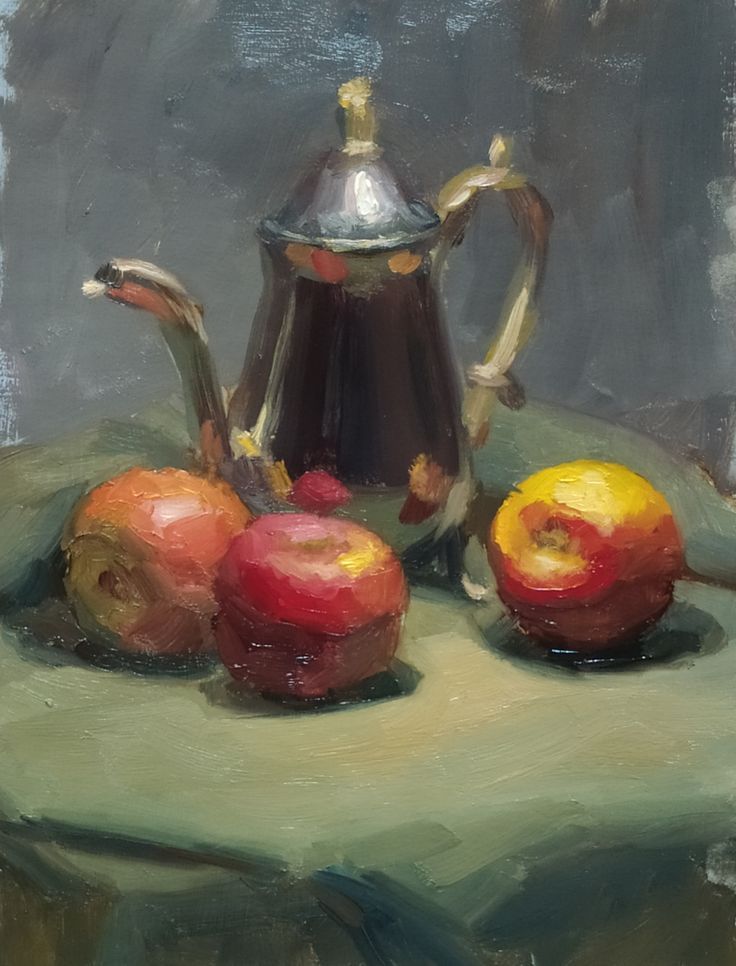
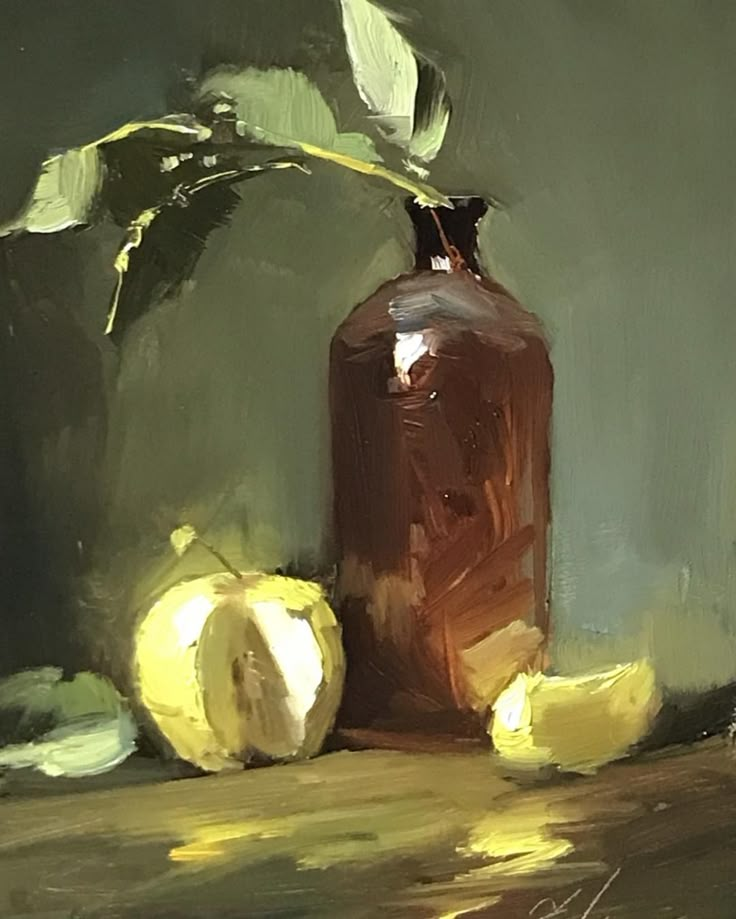
Professional Approach
To professionally approach still life, go beyond simply copying what you see. Focus on thoughtful composition: arrange objects to create visual interest, balance, and a sense of narrative. Experiment with different lighting conditions – a single strong light source can create dramatic shadows, while diffused light offers softer transitions. Practice rendering various textures accurately, from the smooth surface of glass to the rough weave of fabric. Master techniques for realistic drawing, including perspective, value studies, and chiaroscuro. Consider using different drawing tools such as charcoal for rich values, conté crayon for vibrant earth tones, or ink washes for atmospheric effects. Set up a dedicated workspace with good lighting to enhance your focus and comfort.
Examples and Variations

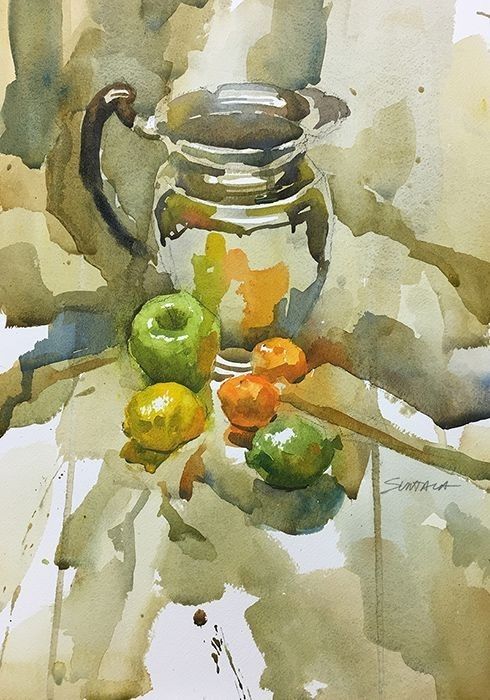
- Monochromatic Study: Choose a single color palette (e.g., all grays, all browns) to emphasize form and value without the distraction of color.
- Textural Focus: Arrange objects with contrasting textures – a wooden bowl, a silk scarf, a metal spoon – to practice rendering different surfaces.
- Themed Still Life: Create a still life around a theme, such as “breakfast table” or “artist’s tools,” adding a personal touch to the arrangement.
- Reflective Surfaces: Include reflective objects like silver teapots or glass bottles to challenge yourself with drawing distorted reflections and light.
6. Figurative Sketching and Expressive Anatomy
Figurative sketching, particularly from life or photographic references, involves capturing the human form’s dynamic poses, subtle gestures, and underlying anatomy. This practice can be incredibly liberating and mindful, as it focuses on understanding and appreciating the complexity and beauty of the human body in motion or repose. It’s not about achieving perfect anatomical accuracy every time, but about capturing the essence and energy of the form.


Why It Is Deeply Relaxing and Mindful
Drawing the human figure, whether through quick gestural studies or more prolonged anatomical explorations, requires intense observation and an immediate response. This demands that you stay fully present in the moment, reacting to the contours, rhythms, and weights of the body. It shifts your focus away from self-consciousness, allowing for a deep appreciation of structure and movement. The challenge of translating a three-dimensional form into two dimensions cultivates mental agility and problem-solving skills, all while engaging your artistic intuition. Moreover, studying the human form can be a profound exercise in empathy and understanding. For those seeking simpler, more abstract approaches, exploring minimalist figure drawing ideas can provide an equally mindful and expressive experience.
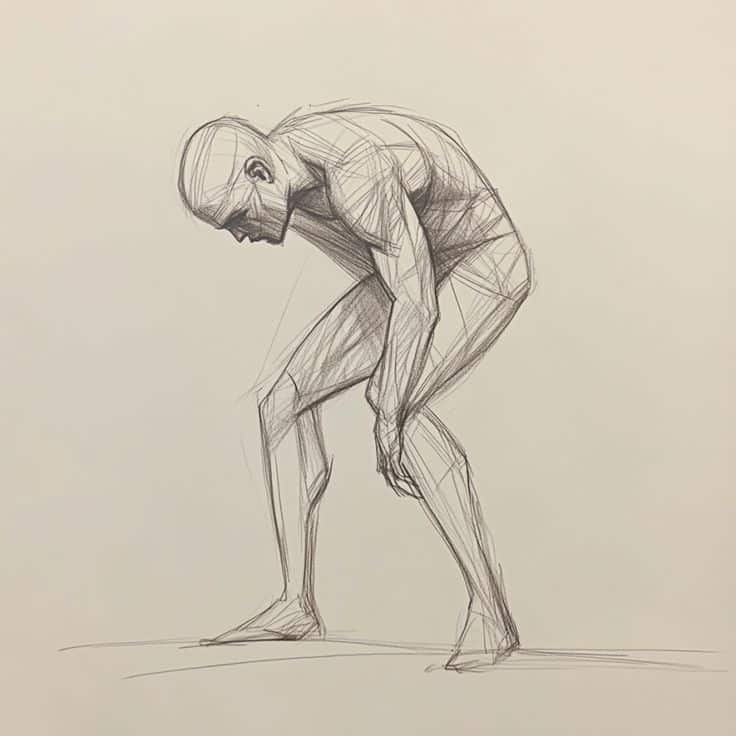
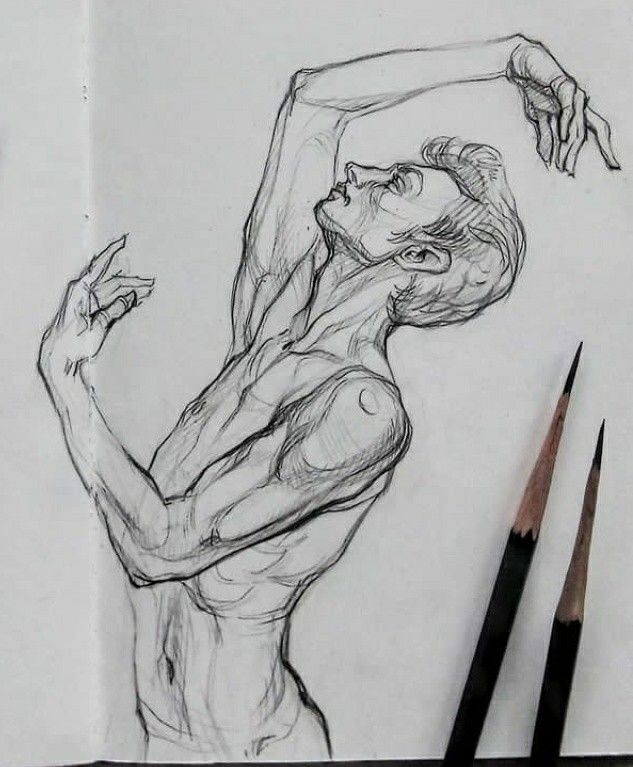
Professional Approach
For a professional approach, regularly attend life drawing sessions or utilize high-quality reference photos. Focus on gesture drawing initially – capturing the overall movement and energy of the pose within short timeframes (30 seconds to 2 minutes). Then, move to longer poses, concentrating on proportion, anatomy, and rendering. Study anatomical charts to understand underlying bone and muscle structures. Experiment with different drawing tools like charcoal, conté, or large graphite sticks to encourage bold, expressive lines. Don’t be afraid to make mistakes; each attempt is a learning opportunity. This continuous practice helps you develop a fluidity and confidence in your lines, enhancing the meditative flow of the process. Consider using various methods and techniques to improve your drawing skills, such as the valuable insights found in “10 Genius Drawing Hacks Every Artist Should Know.” These hacks can refine your approach and make the learning process even more enjoyable and less stressful.
Examples and Variations
- Gestural Series: Create a series of very quick sketches of different poses, focusing solely on the movement and flow of the body.
- Anatomical Focus: Choose a specific body part (e.g., hand, foot, face) and conduct a detailed study, paying close attention to its structure and musculature.
- Light and Shadow Play: Focus on how light defines the planes and forms of the body, creating dramatic chiaroscuro effects.
- Dynamic Poses: Challenge yourself with complex, active poses, emphasizing balance and implied motion.
7. Urban Sketching and Architectural Details

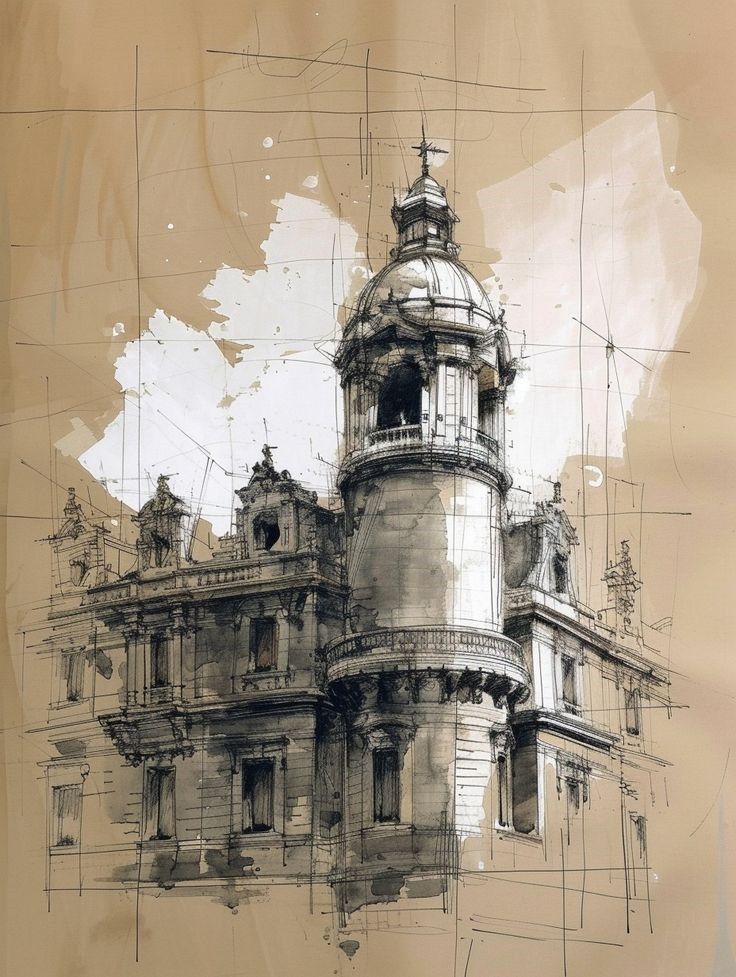
Urban sketching involves drawing on location in cities, towns, and villages, capturing everyday scenes and architectural elements. This practice encourages artists to observe their surroundings with fresh eyes, translating the built environment into personal artistic statements. It’s a dynamic and engaging form of drawing that offers a unique blend of observation, spontaneity, and historical appreciation.
How It Promotes Relaxation and Mindfulness
Drawing in an urban environment forces you to engage with the world around you actively. You become attuned to the intricate details of buildings, the geometry of streets, and the human activity unfolding within the scene. This hyper-focus on external elements effectively silences internal chatter, anchoring you firmly in the present. The challenge of quickly capturing fleeting moments – a passing car, a pedestrian, a changing shadow – sharpens your observational skills and trains your mind to filter distractions, leading to a profound state of relaxed concentration. It also encourages exploring new places and seeing familiar ones in a new light.

Professional Approach
For a professional approach, invest in a portable sketching kit, including waterproof pens (for ink and wash sketches), a small watercolor set, and a sturdy sketchbook. Learn basic perspective drawing to accurately represent buildings and spatial depth. Practice drawing architectural elements like windows, doors, cornices, and rooflines to build a repertoire of forms. Develop speed-sketching techniques for capturing the essential character of a scene quickly. Pay attention to how light and shadow define architectural forms and create mood. Consider incorporating elements of human activity to add life and narrative to your urban scenes. The key is to embrace imperfections and the inherent spontaneity of drawing on location.
Examples and Variations


- Facade Study: Choose a building facade and focus on rendering its architectural details, textures, and the interplay of light and shadow.
- Street Scene: Capture a bustling street corner, emphasizing the linear perspective and the dynamic flow of people and vehicles.
- Interior Spaces: Sketch the interior of a cafe, library, or market, focusing on the atmosphere and the details that define the space.
- Nighttime Cityscape: Experiment with drawing urban scenes at night, focusing on artificial light sources, reflections, and dramatic contrasts.
8. Character Design and Imaginative Creatures
Delving into character design and the creation of imaginative creatures provides an unparalleled opportunity for escapism and self-expression. This idea moves away from direct observation and into the realm of pure invention, allowing you to build worlds and inhabitants entirely from your imagination. It is a highly engaging process that can be incredibly therapeutic, offering a mental vacation from reality.
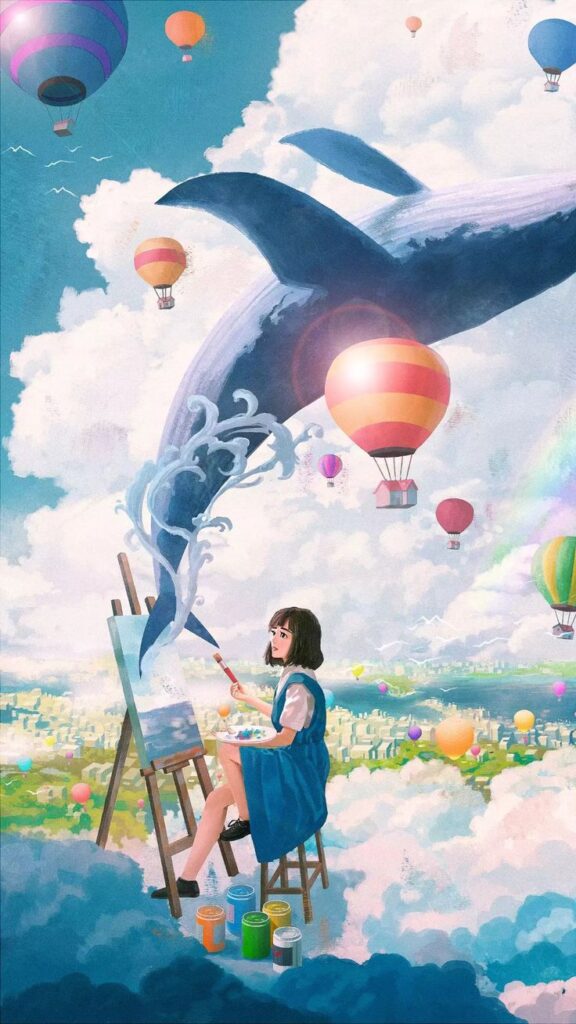
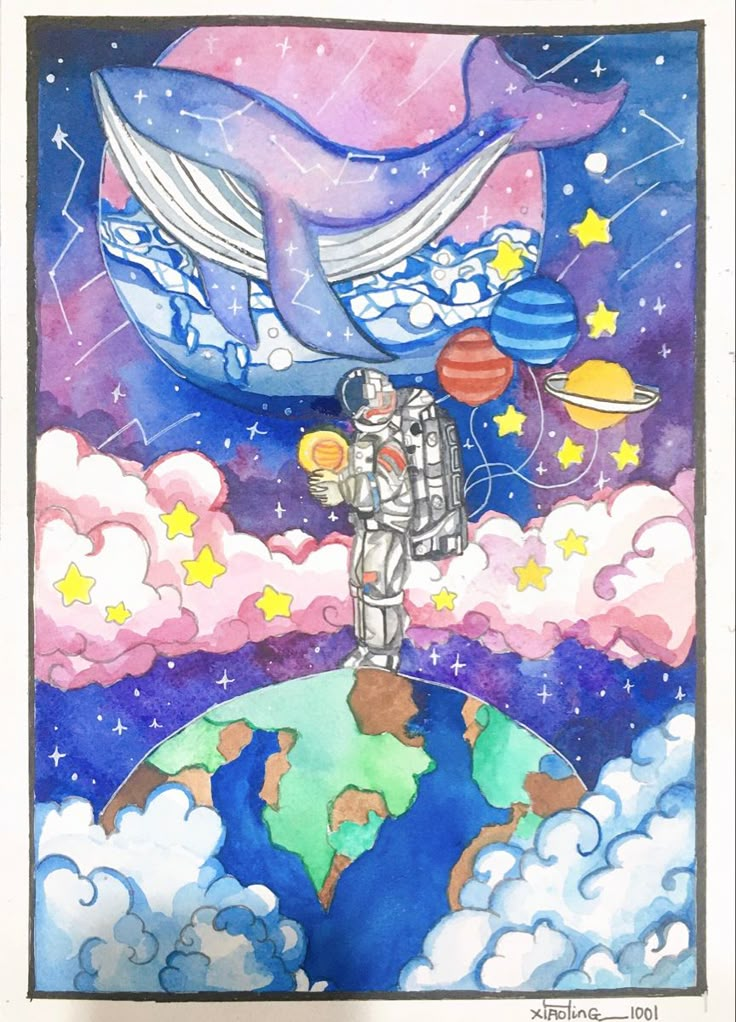
Why It Fosters Relaxation and Mindfulness
Creating characters and creatures engages the deepest parts of your imagination, transporting you into a world of your own making. This act of world-building is a powerful form of escapism, allowing you to momentarily set aside real-world anxieties. The iterative process of sketching, refining, and developing a character’s appearance, personality, and backstory provides a focused yet playful outlet for creative energy. It allows you to explore themes, emotions, and narratives through visual representation, often leading to surprising insights about yourself. The freedom from external critique, as these creations are purely yours, makes it a safe space for uninhibited creative play, similar to the freedom found in tattoo drawing where personal expression is paramount.
Professional Approach

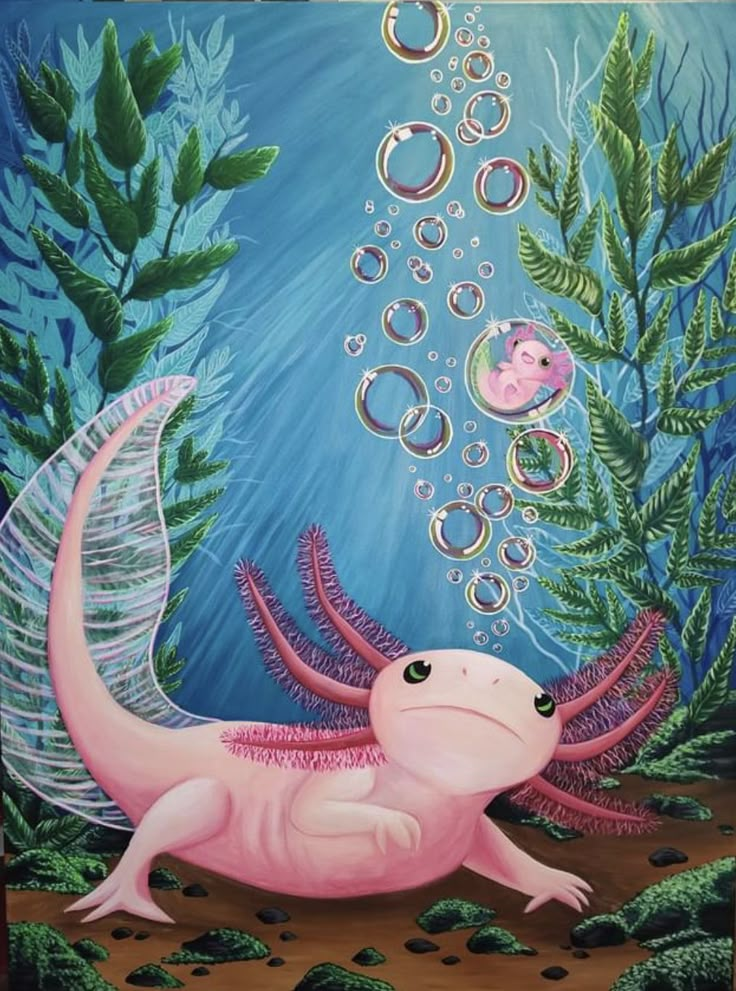
Professionally, character design involves more than just drawing cool creatures. It requires understanding basic anatomy (even for fantastical beings), storytelling, and visual communication. Develop a clear brief for your character: what is their personality, their environment, their purpose? Start with basic shapes and silhouettes to establish proportions and posture. Create multiple iterations, exploring different features, costumes, and expressions. Learn about visual tropes and how to subvert them to create unique designs. Experiment with various drawing styles, from cartoony to realistic, to find what best suits your vision. Utilize digital tools if comfortable, but don’t shy away from traditional sketching to quickly iterate ideas. Build a consistent style guide for your characters to maintain cohesion across multiple drawings.
Examples and Variations

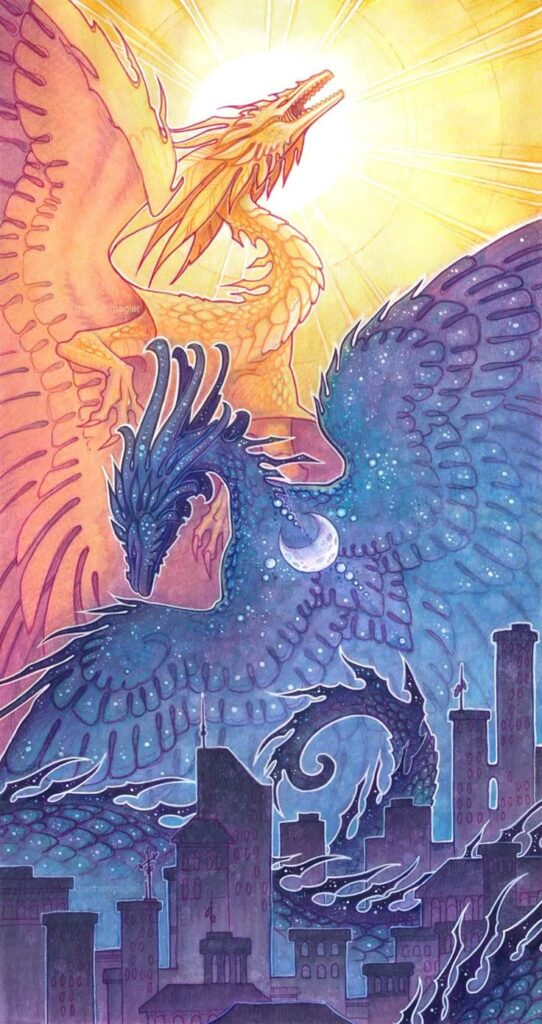
- Mythological Reinterpretation: Choose a mythical creature (e.g., dragon, griffin, fairy) and redesign it with a modern or personal twist.
- Sci-Fi Alien: Design an alien species, considering its biology, culture, and technological adaptations reflected in its appearance.
- Fantasy Character: Create a character for a fantasy narrative, focusing on their armor, weapons, and magical attributes.
- Mascot Design: Develop a mascot for an imaginary brand or event, ensuring it conveys specific traits like friendliness, strength, or playfulness.
9. Realistic Portraiture or Animal Studies
The challenge of capturing a likeness, whether of a human face or an animal, requires an extraordinary level of focus and sensitivity. Realistic portraiture and animal studies are not just about rendering; they are about understanding the subtle nuances of expression, personality, and unique characteristics. This intense observational practice can be incredibly absorbing and, consequently, profoundly relaxing.
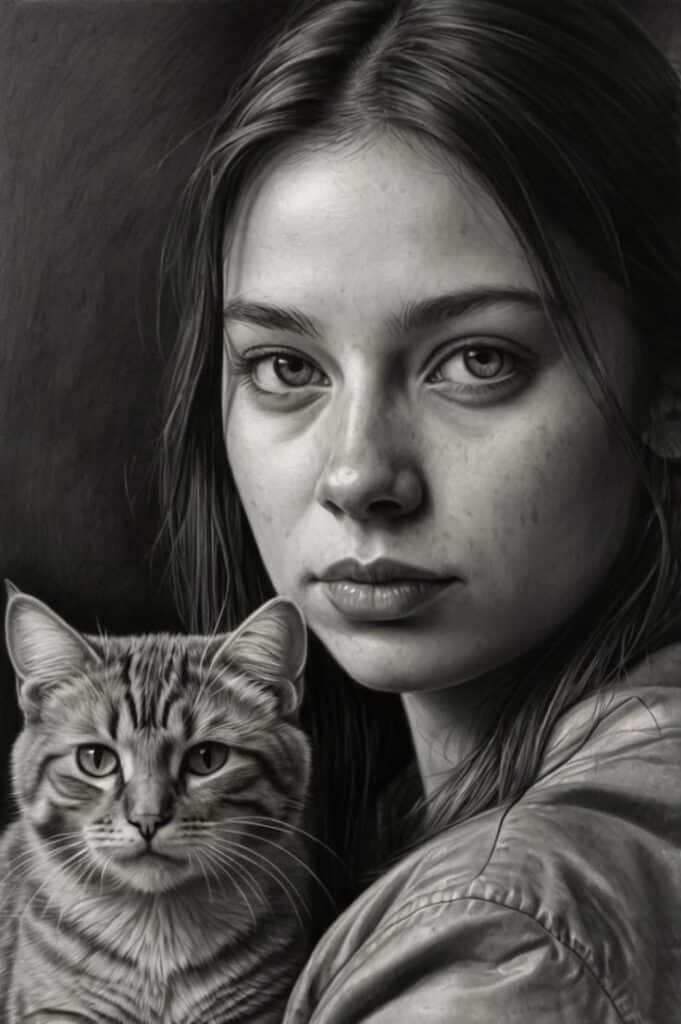
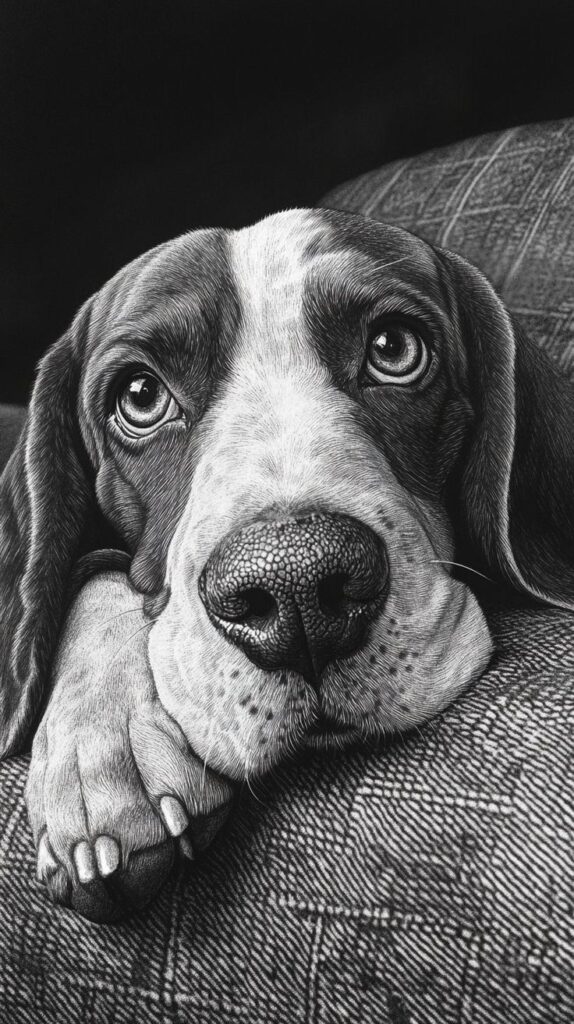
How It Cultivates Relaxation and Mindfulness
Engaging in realistic portraiture or animal studies demands sustained concentration, forcing your mind to stay anchored in the present moment. Every curve, every shadow, every glint in an eye requires meticulous attention. This deep immersion in the visual details of your subject pushes aside distractions and worries, creating a meditative state. The process teaches immense patience and humility, as achieving likeness is a gradual unfolding of careful strokes and observations. The reward of seeing a personality emerge on your paper is deeply gratifying, reinforcing a sense of accomplishment and calm focus. It’s a journey of empathy, connecting you to the subject’s spirit.
Professional Approach
To approach realistic portraiture or animal studies professionally, start with mastering foundational skills: proportion, anatomy, perspective, and value. Study facial planes and muscle structures for humans, and animal skeletal/muscular systems for creatures. Utilize high-quality reference photos or work from life when possible. Practice rendering different textures like skin, fur, feathers, and hair. Understand how light interacts with form to create three-dimensionality. Experiment with different drawing tools such as soft graphite for subtle transitions, charcoal for dramatic contrasts, or conté crayon for warmth. Learn to identify and emphasize unique features that convey personality. For more advanced techniques and insights, exploring realistic drawing guides can provide valuable instruction on achieving depth and lifelike quality.
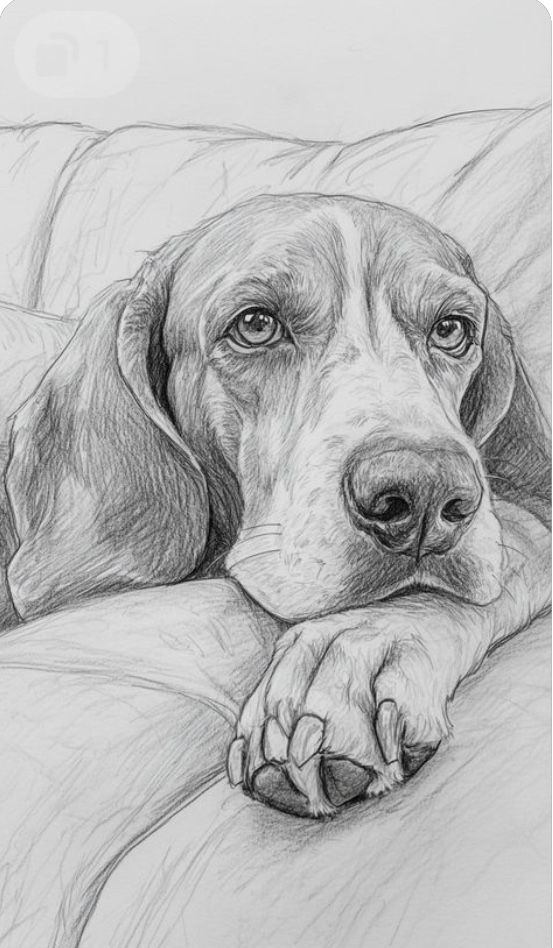
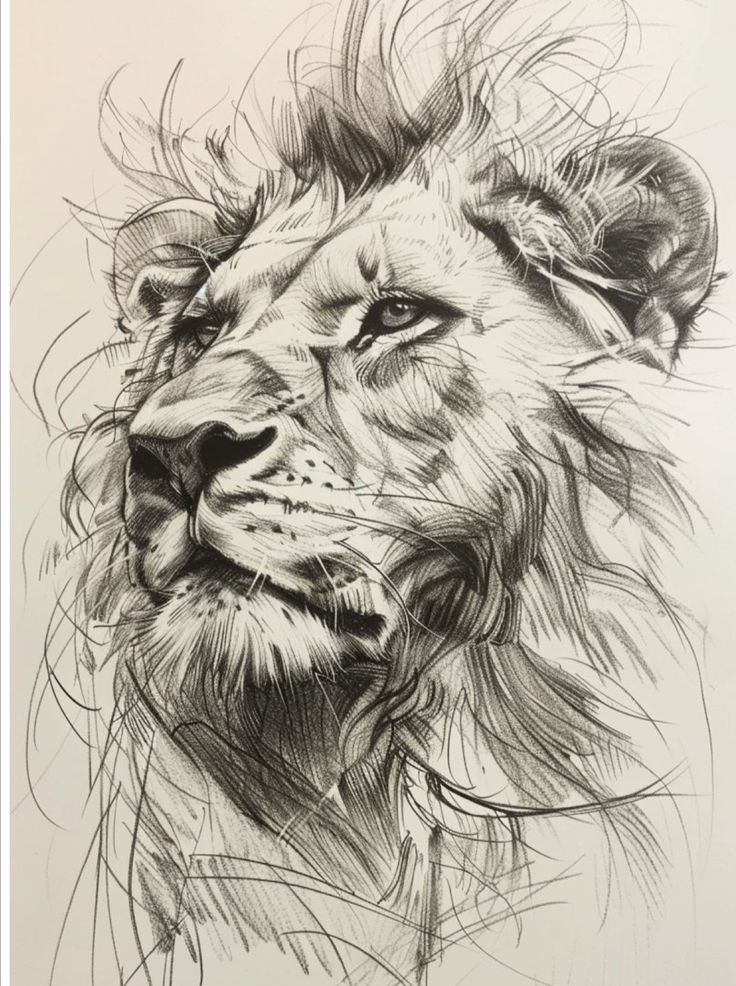
Examples and Variations
- Expressive Portraits: Focus on capturing the emotion or unique personality of a subject, even if it means slightly exaggerating certain features.
- Animal in Motion: Attempt to capture an animal in a dynamic pose, emphasizing its musculature and implied movement.
- Elderly Subject: Draw an older face, paying tribute to the wisdom and experience etched into wrinkles and lines.
- Pet Portrait: Create a loving portrait of a beloved pet, focusing on their unique characteristics and familiar expressions.
10. Calligraphy and Hand Lettering
Calligraphy, the art of beautiful writing, and hand lettering, the art of drawing letters, are highly disciplined yet immensely rewarding drawing practices that offer a unique path to mindfulness. Both involve careful attention to form, spacing, and flow, transforming text into visually stunning works of art.
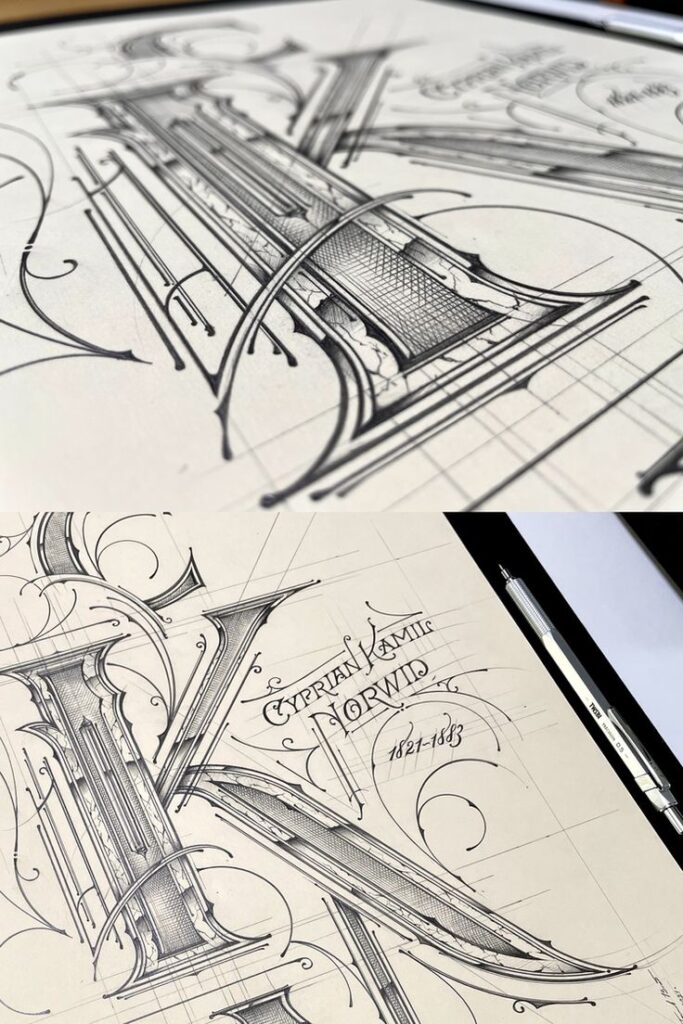
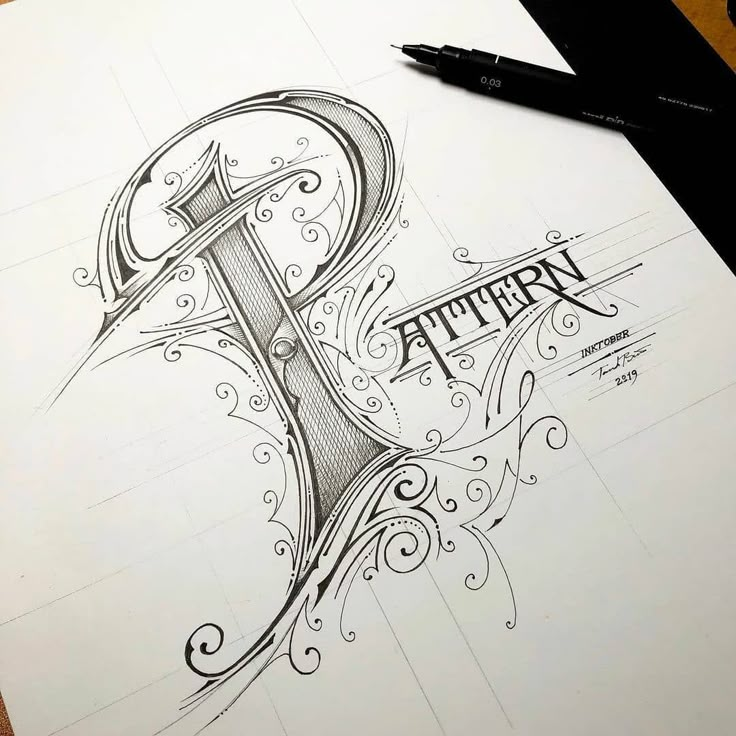
How It Fosters Relaxation and Mindfulness
The repetitive, rhythmic motions involved in forming letters and strokes in calligraphy and hand lettering create a powerful meditative effect. Each stroke requires deliberate focus, control, and precision, engaging your hand, eye, and mind in harmonious coordination. This intense concentration on the minute details of letterforms helps to quiet extraneous thoughts, grounding you entirely in the present task. It teaches patience, consistency, and an appreciation for aesthetics in detail. The slow, methodical pace is a direct counterpoint to the rush of modern life, allowing for moments of deep calm and satisfying creation. The act of creating something beautiful with your own hand offers a deep sense of satisfaction.
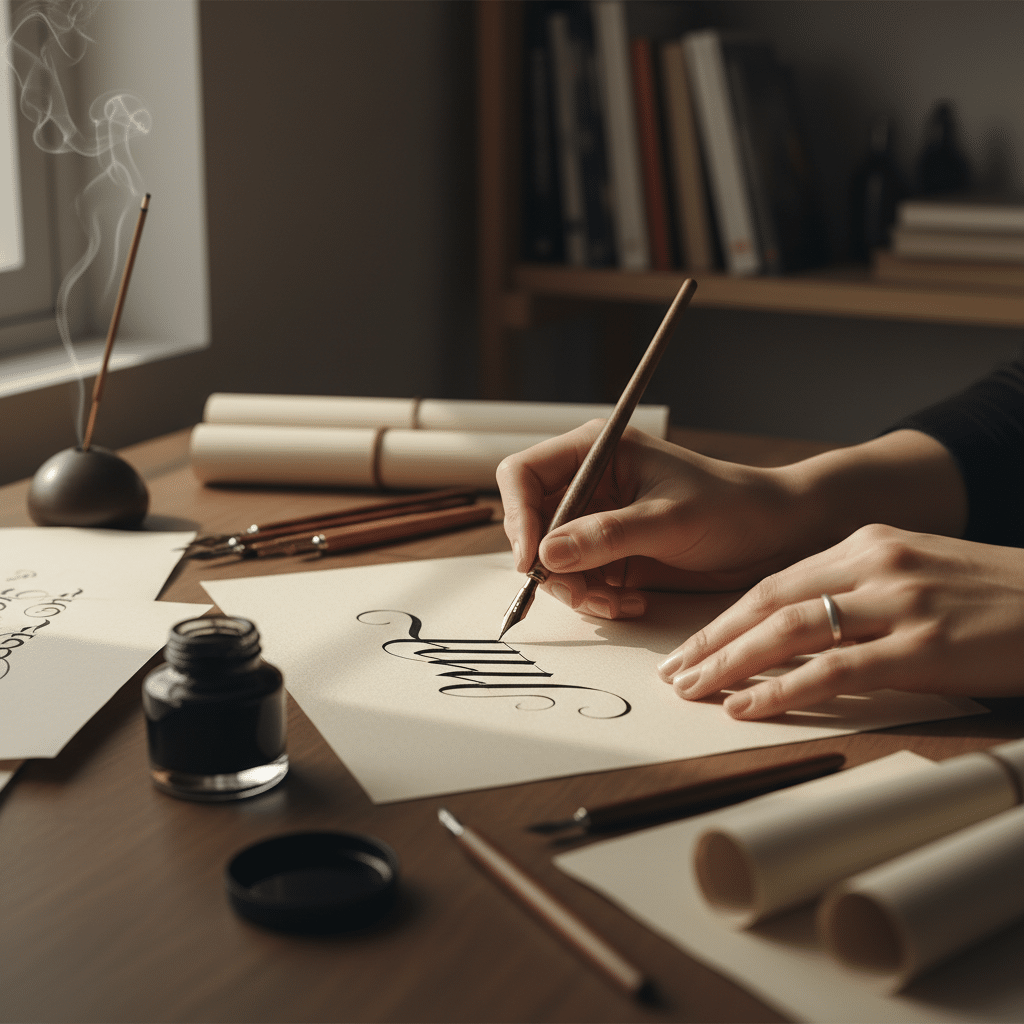
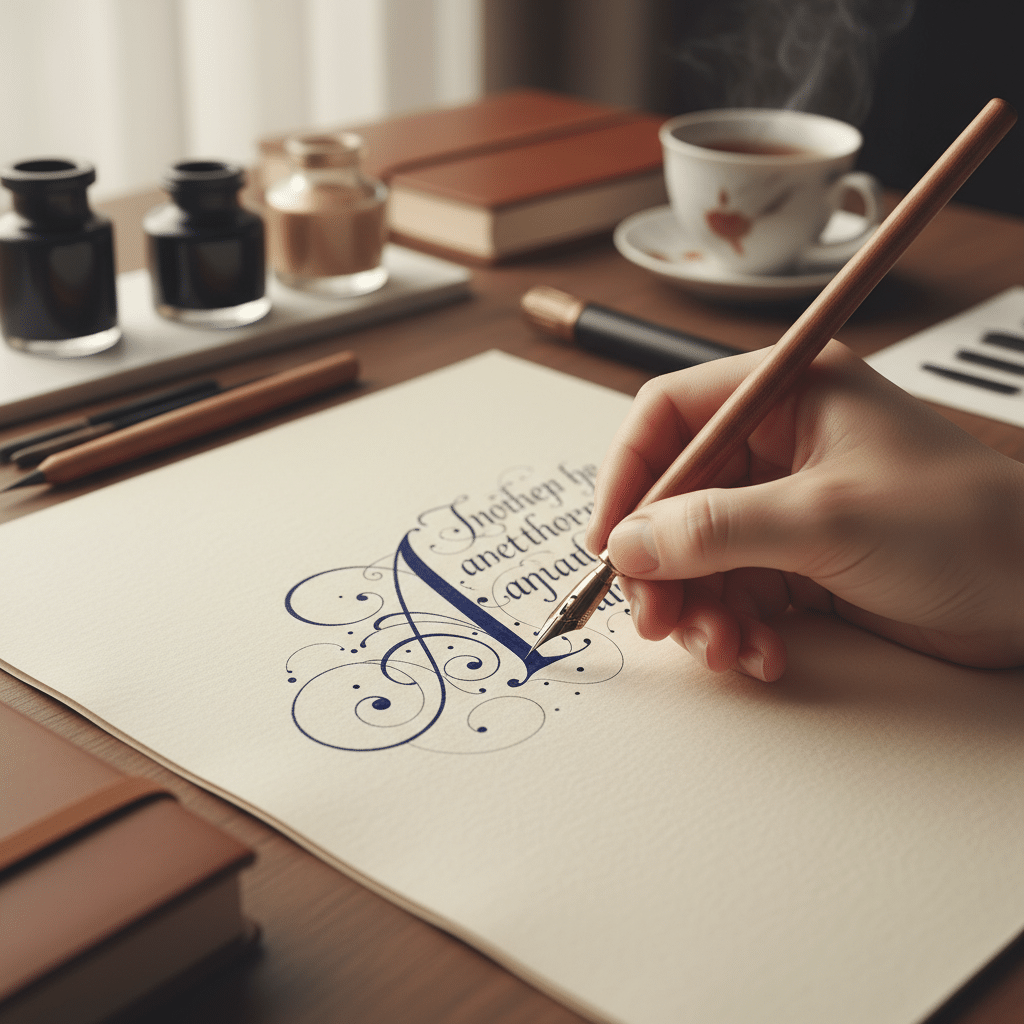
Professional Approach
To professionally approach calligraphy and hand lettering, begin by studying classical letterforms and their underlying principles (e.g., Roman, Copperplate, Spencerian). Invest in appropriate tools: broad-edge or pointed pens, inks of various colors, and smooth, bleed-resistant paper. Practice basic strokes repeatedly before attempting full letters or words. Understand negative space and how it impacts overall composition. For hand lettering, explore different styles (serif, sans-serif, script, decorative) and learn how to create consistent spacing and kerning. Experiment with embellishments, flourishes, and ligatures to add artistic flair. Both disciplines require diligent practice and a keen eye for detail. Focus on consistency in pressure, angle, and rhythm to achieve elegant and professional results.
Examples and Variations
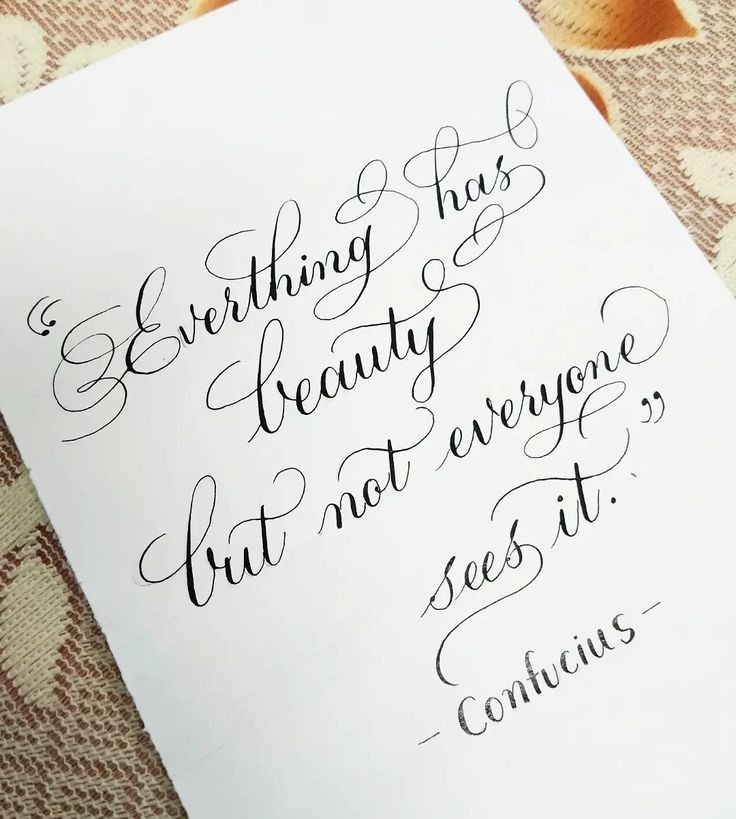
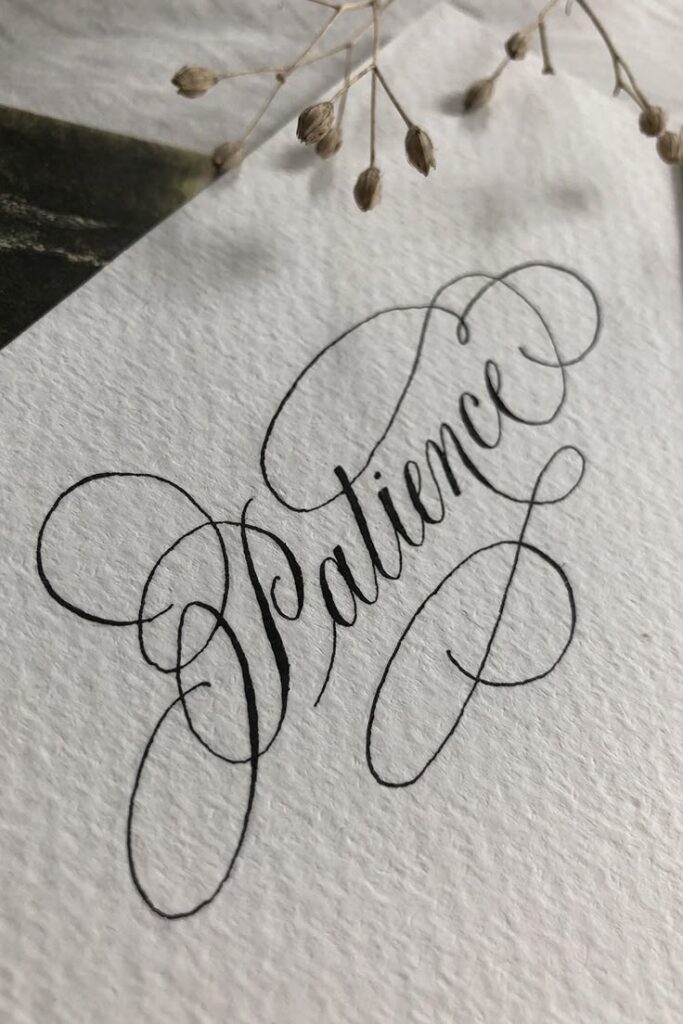
- Inspirational Quotes: Select a short, meaningful quote and render it beautifully using a specific calligraphic or hand-lettering style.
- Personalized Stationery: Design custom monograms, names, or addresses for cards, invitations, or envelopes.
- Word Art: Transform a single word into a piece of art, exploring different fonts, textures, and decorative elements to convey its meaning visually.
- Illuminated Initials: Create an elaborate, illuminated capital letter, similar to those found in medieval manuscripts, combining lettering with decorative drawing.
Conclusion
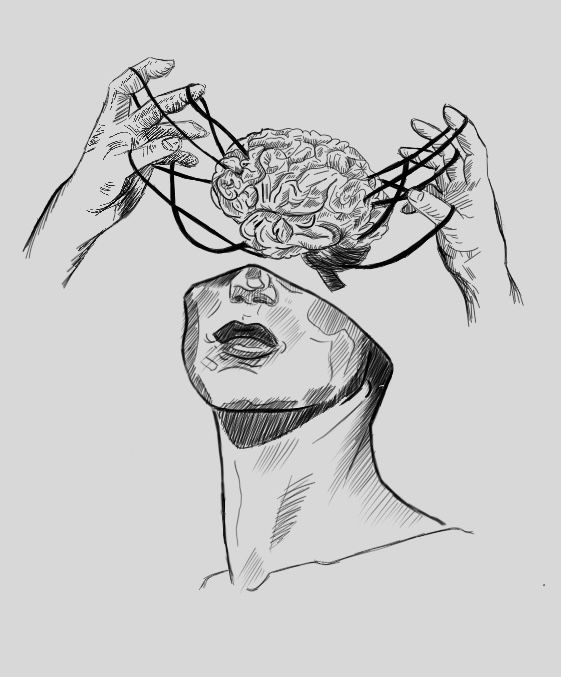
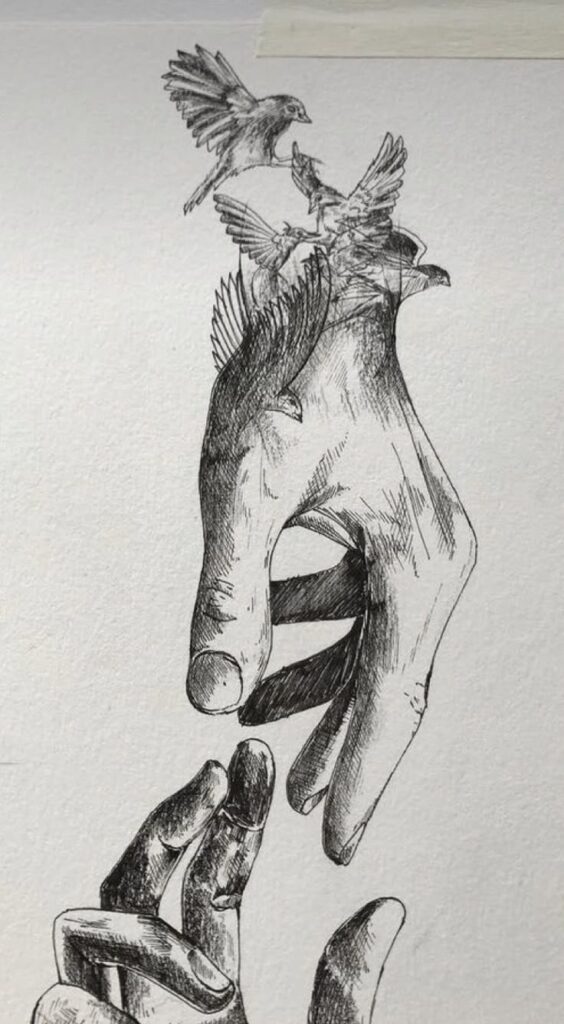
Embarking on any of these professional drawing ideas is more than just an artistic endeavor; it is a deliberate step towards cultivating a calmer, more mindful existence. The act of creating, with intention and focus, offers a powerful antidote to the pervasive stress of contemporary life. Whether you gravitate towards the structured serenity of mandalas, the observant tranquility of botanical illustration, or the unbridled freedom of abstract expressionism, each path promises a unique journey of self-discovery and relaxation.
By dedicating time to these practices, you are not merely sketching lines on paper; you are sculpting moments of peace, refining your mental focus, and nurturing your creative spirit. This therapeutic engagement with art enhances not only your drawing skills but also your overall well-being, proving that the most profound de-stressing often comes from the most deliberate and creative actions. Embrace the pencil, immerse yourself in the process, and discover the ultimate relaxation that professional drawing can offer. Start your journey today and transform your stress into creative energy.
- 32shares
- Facebook0
- Pinterest32
- Twitter0

